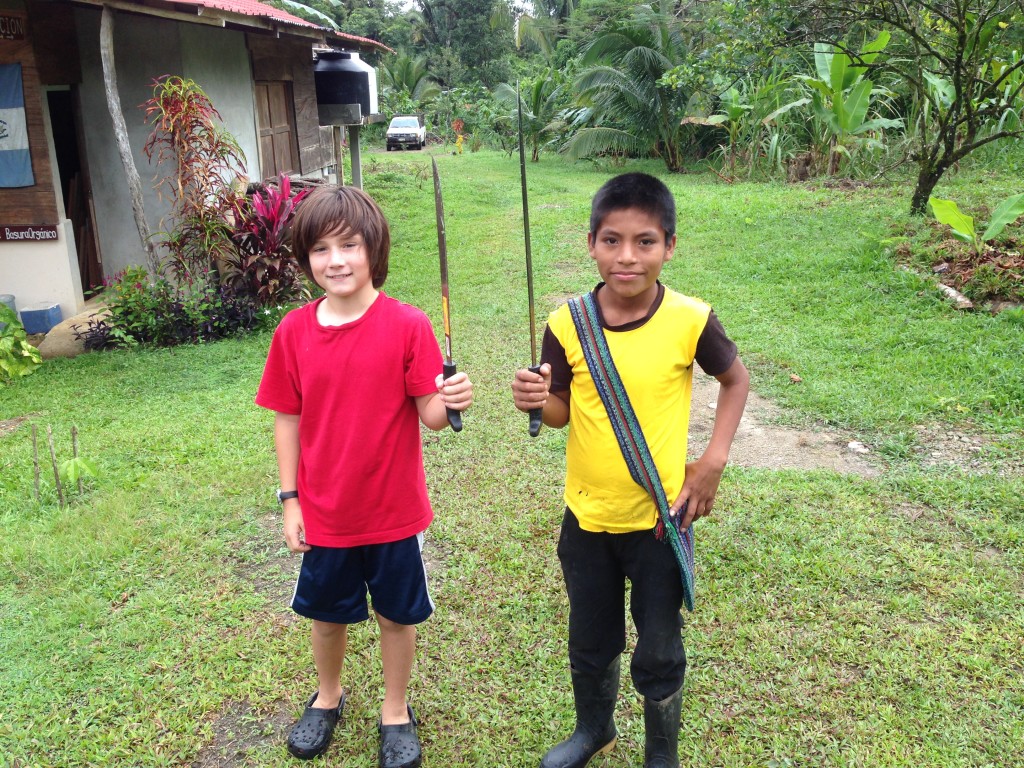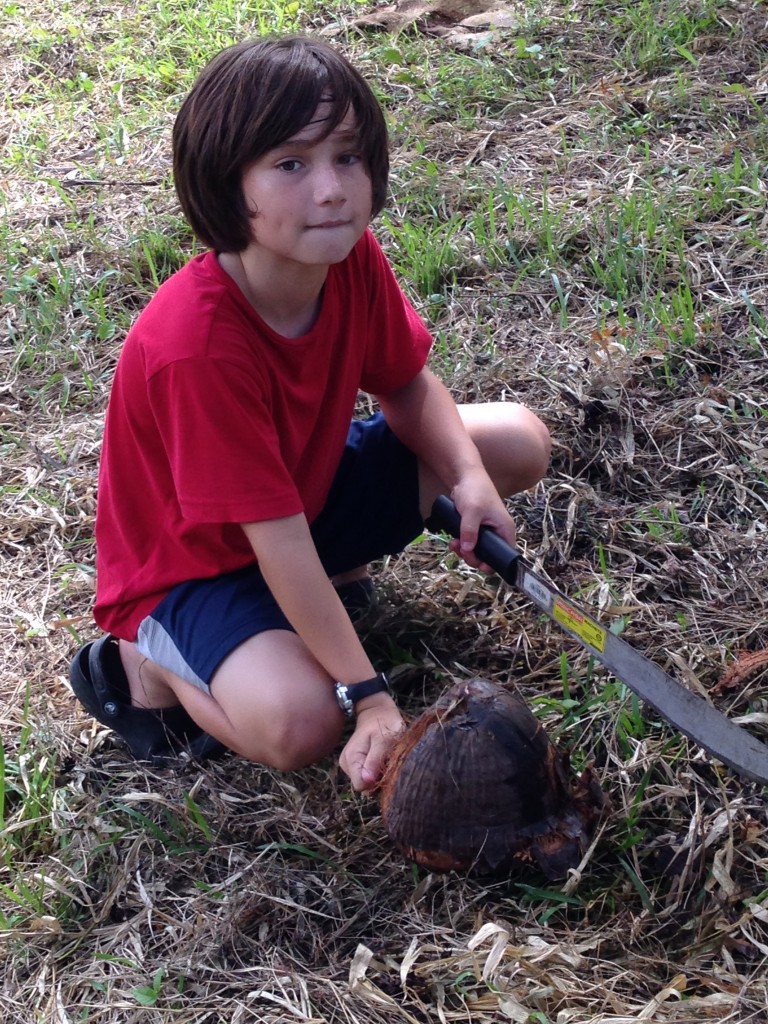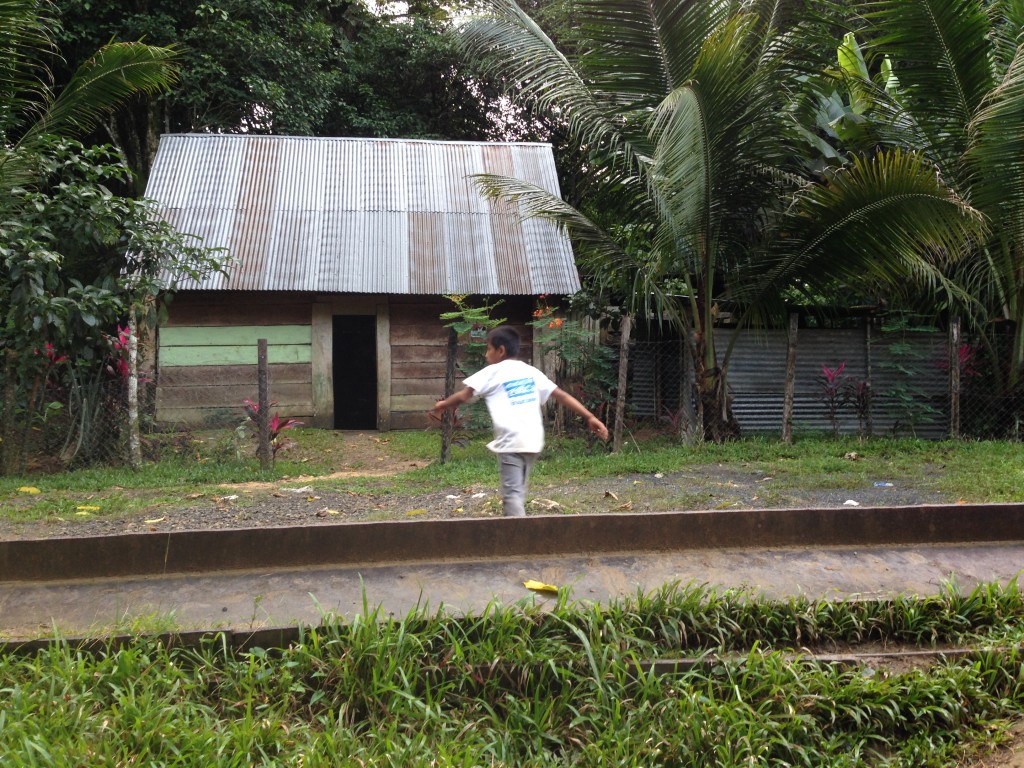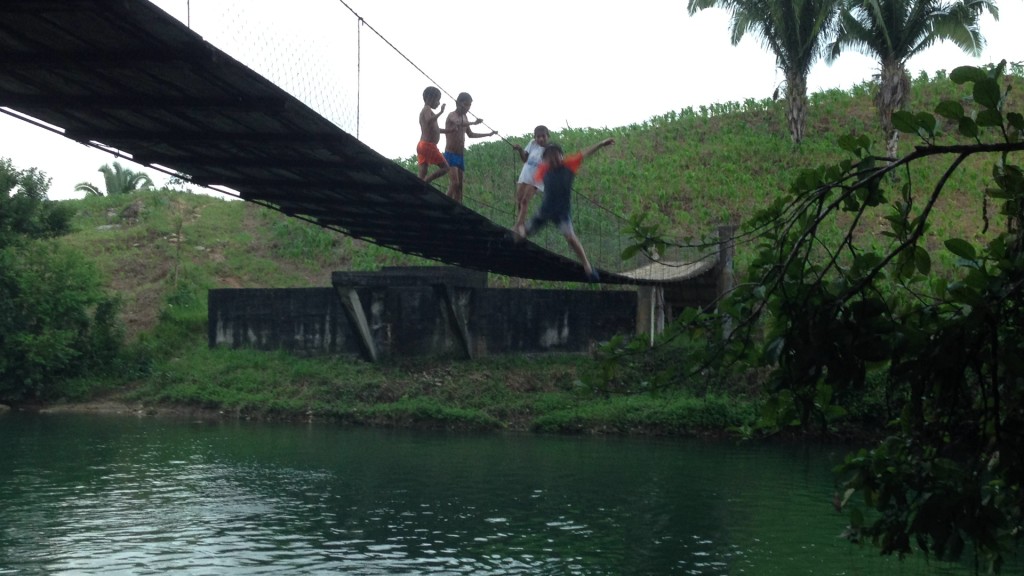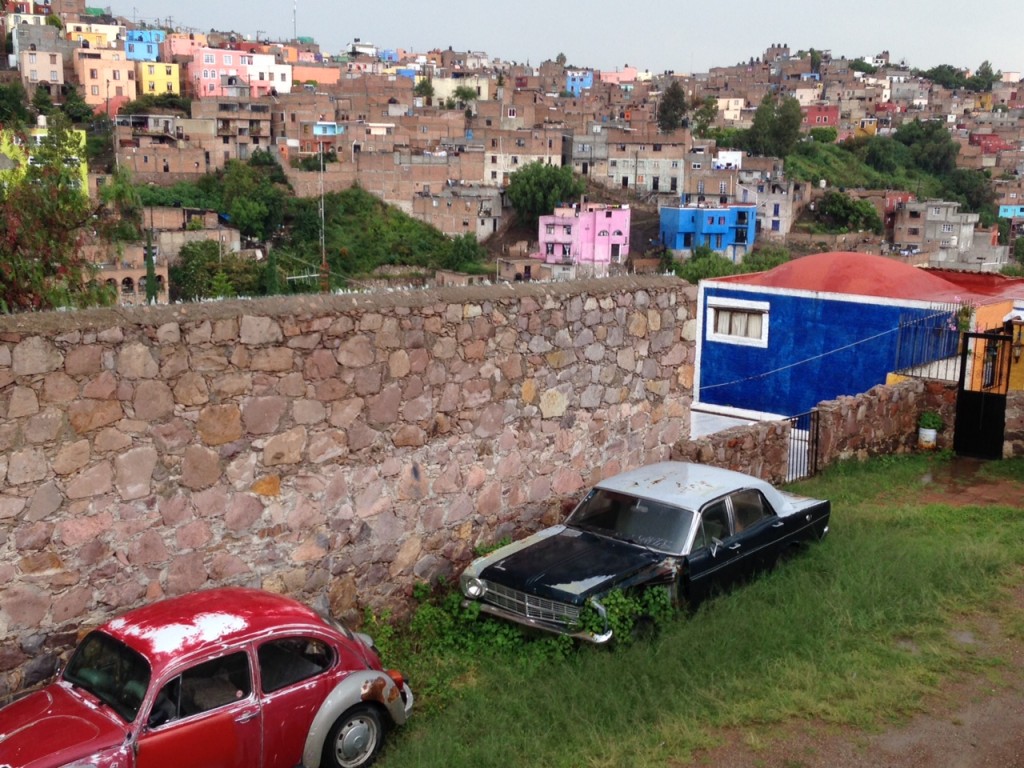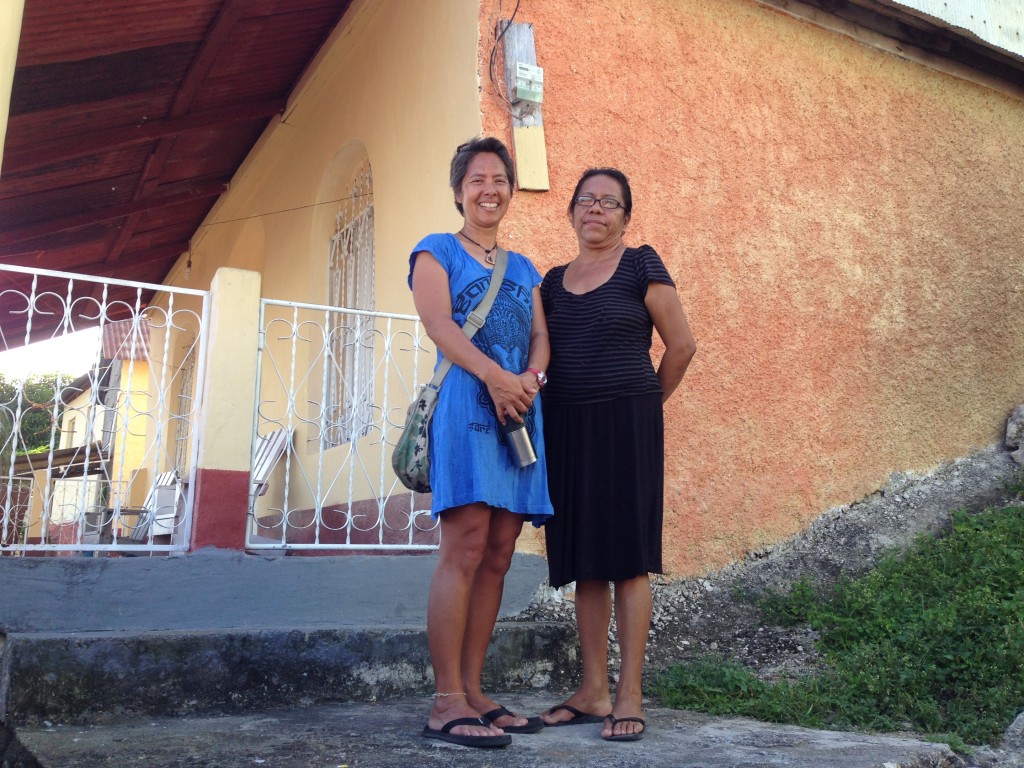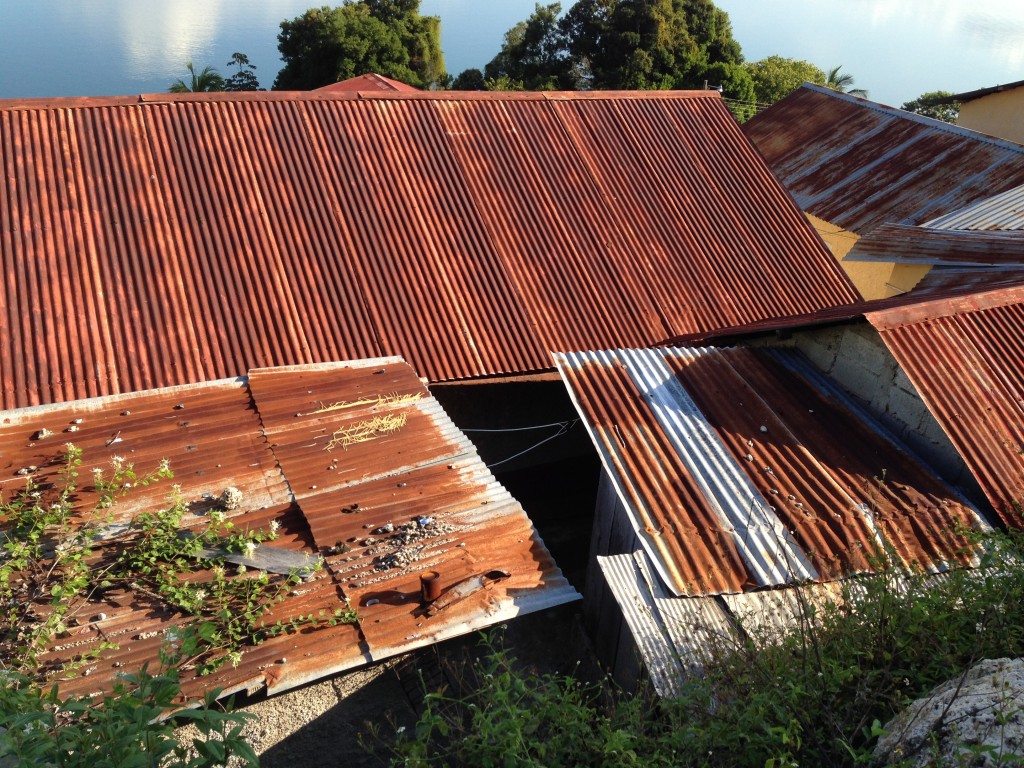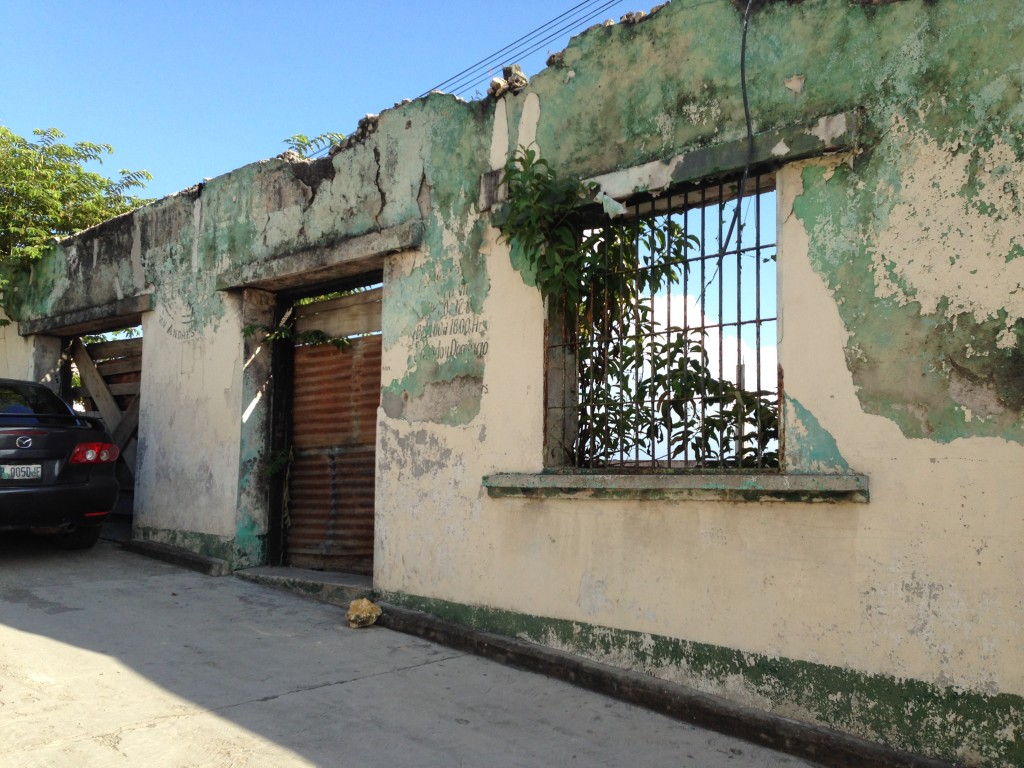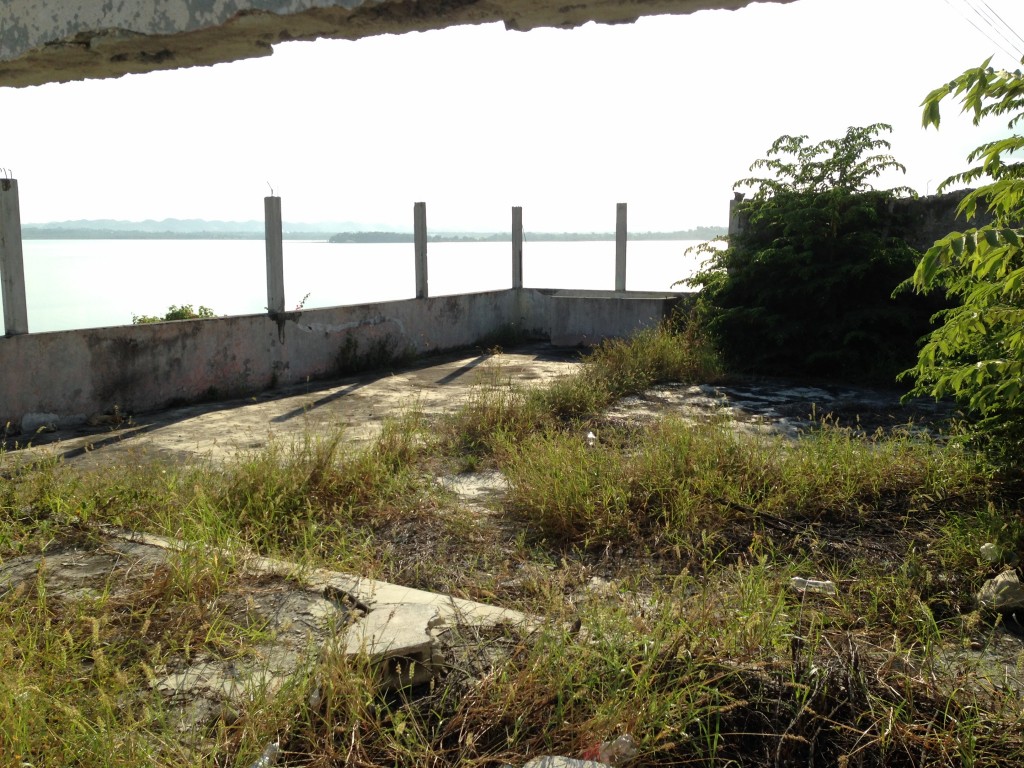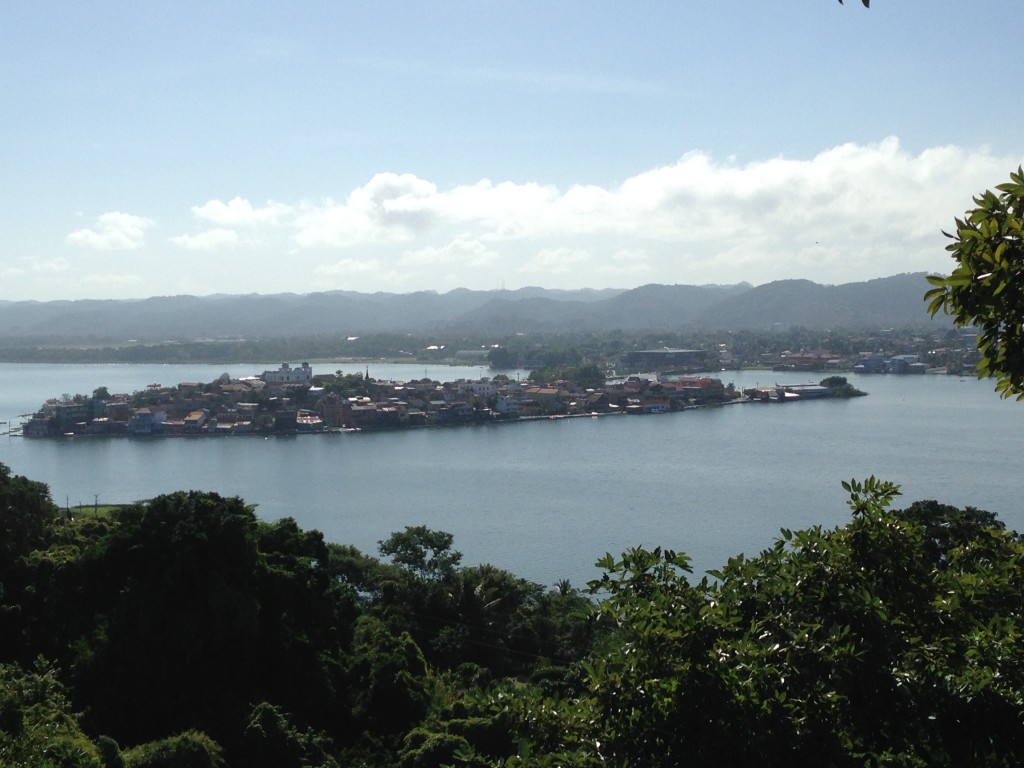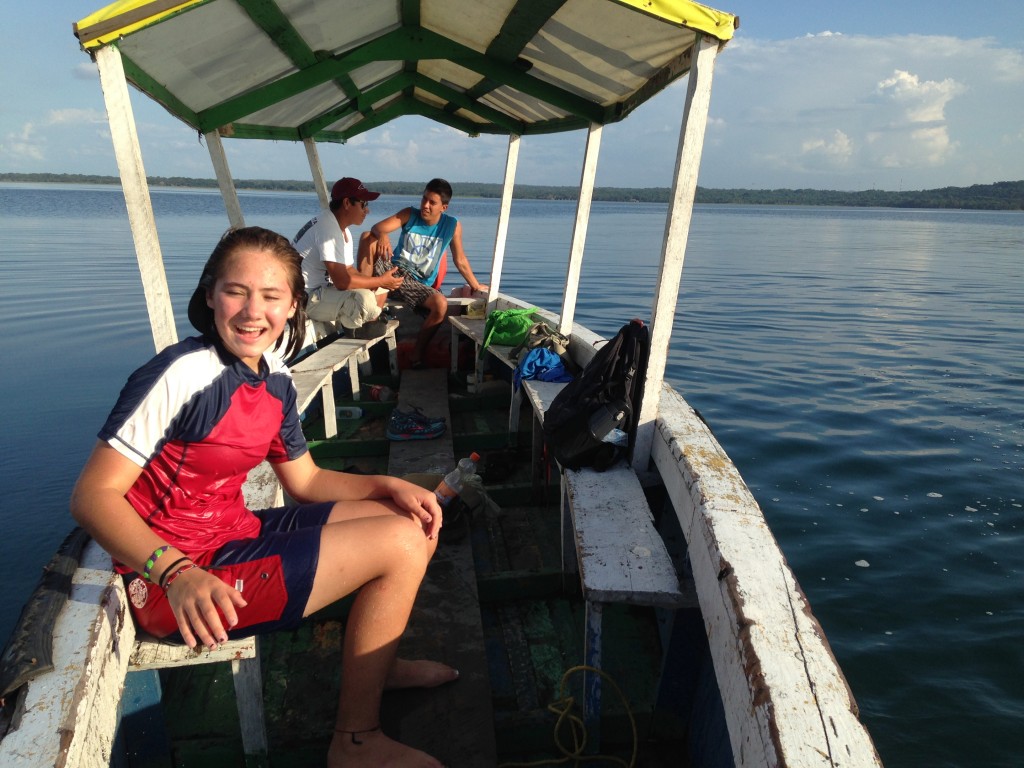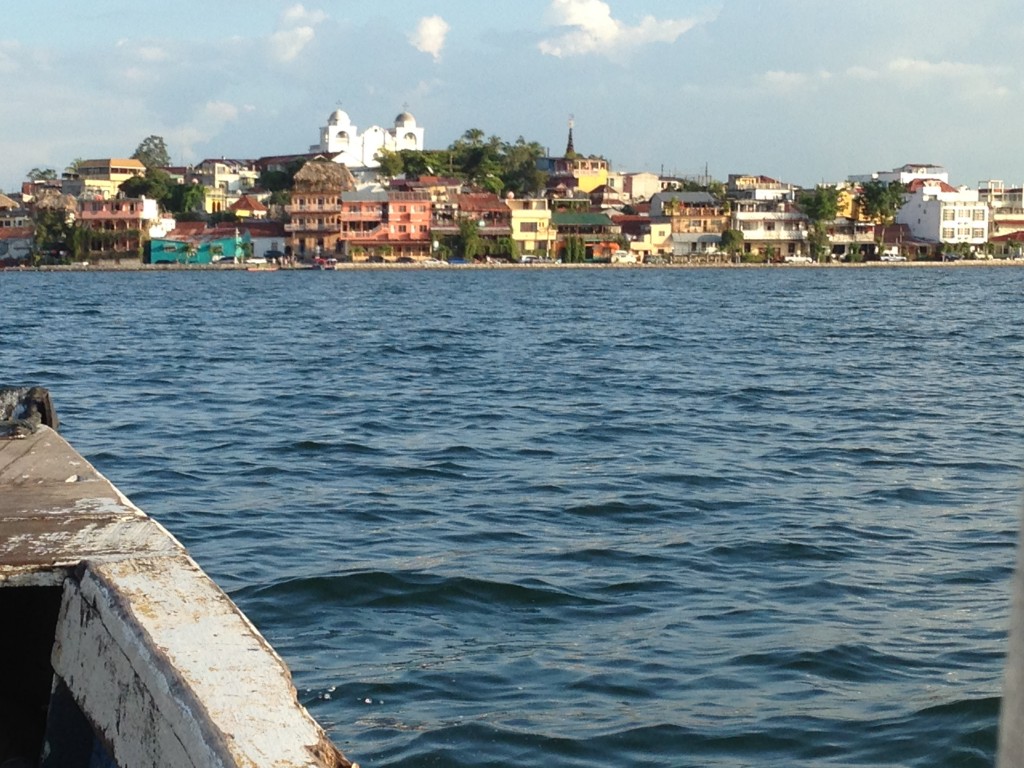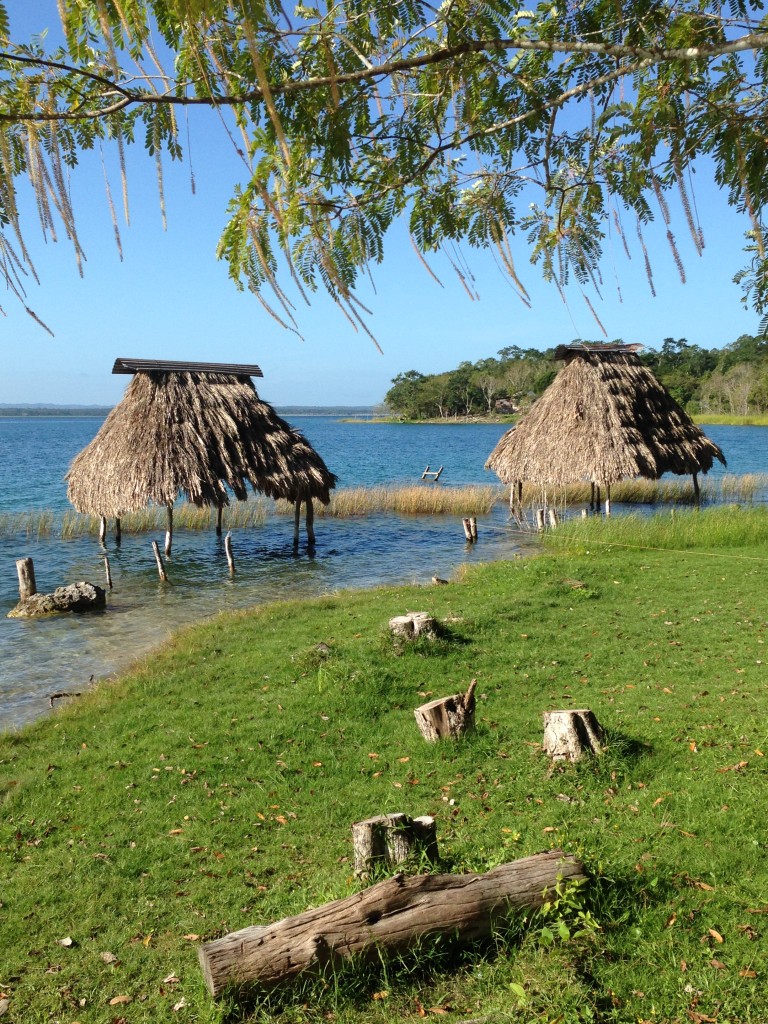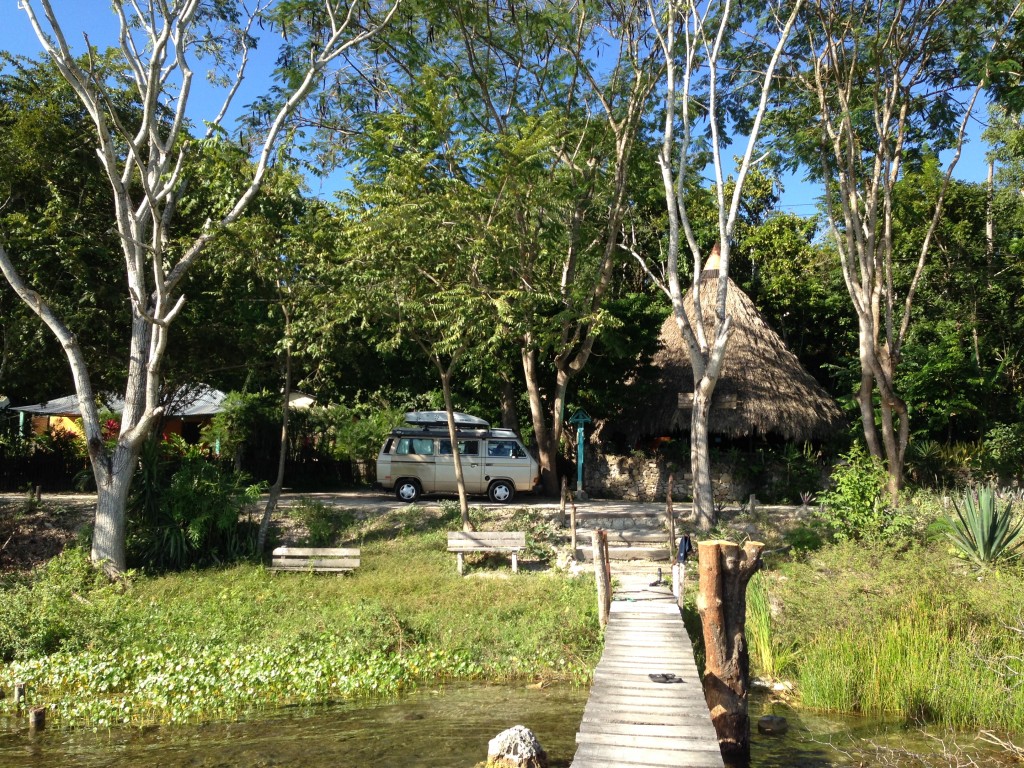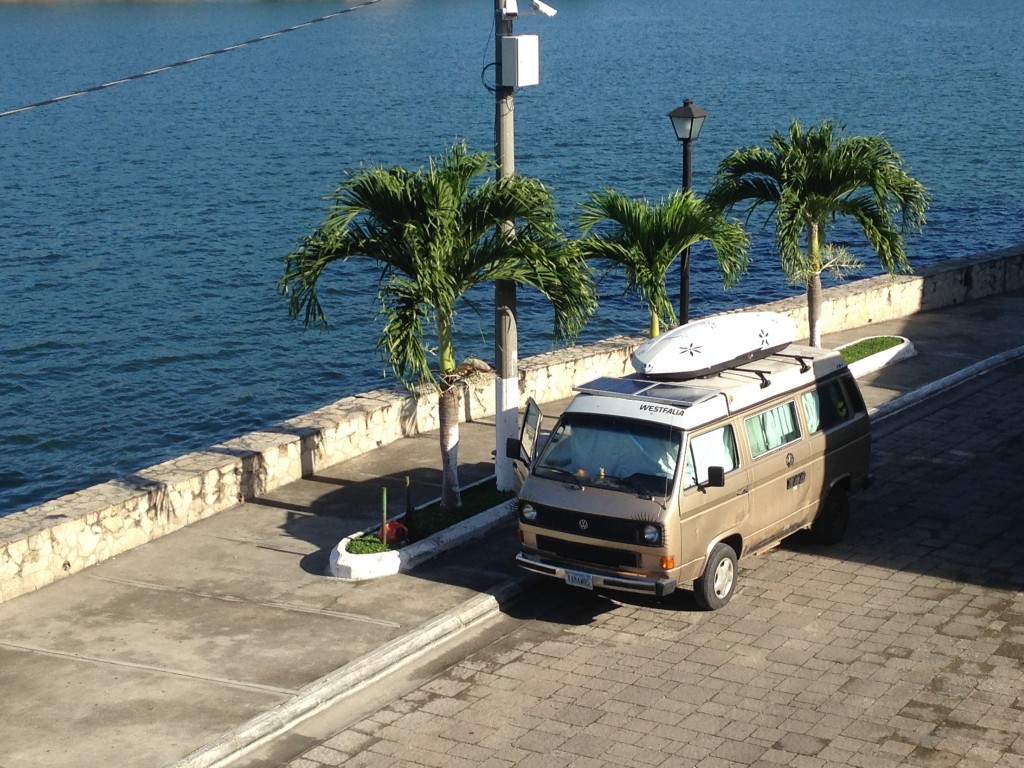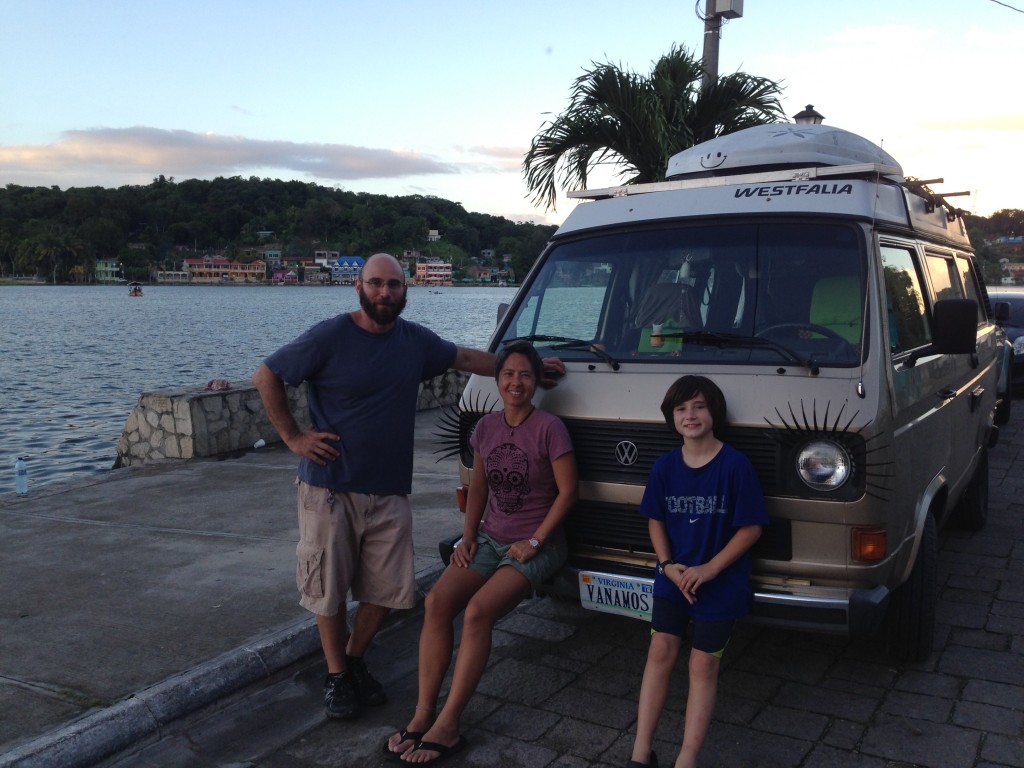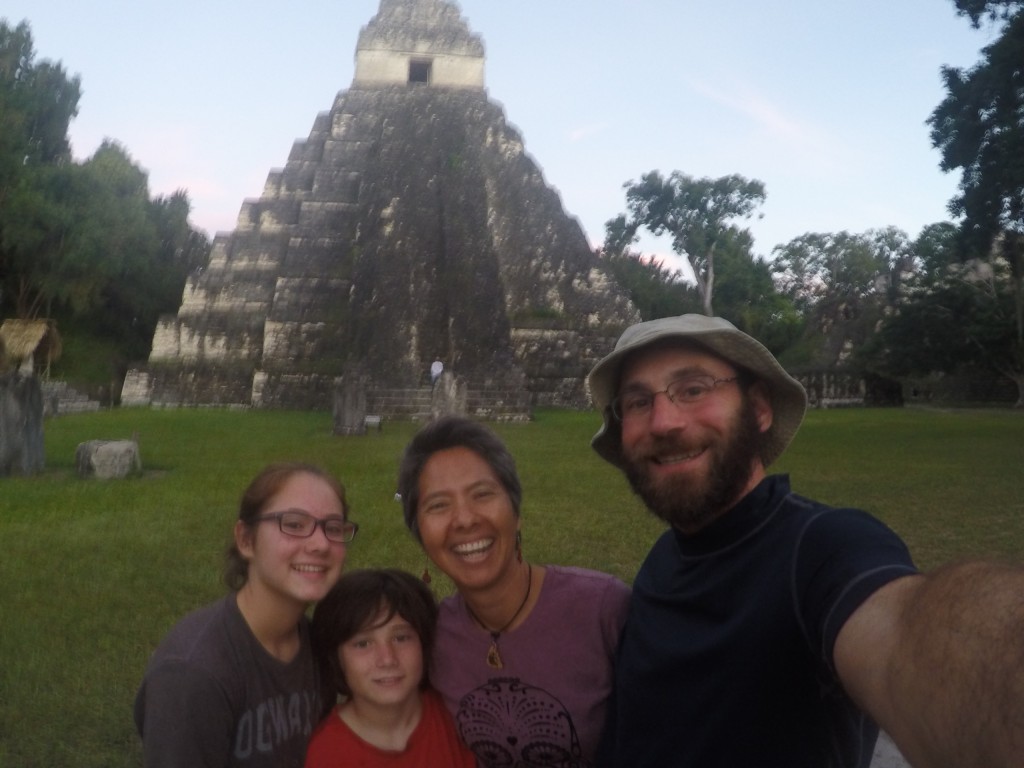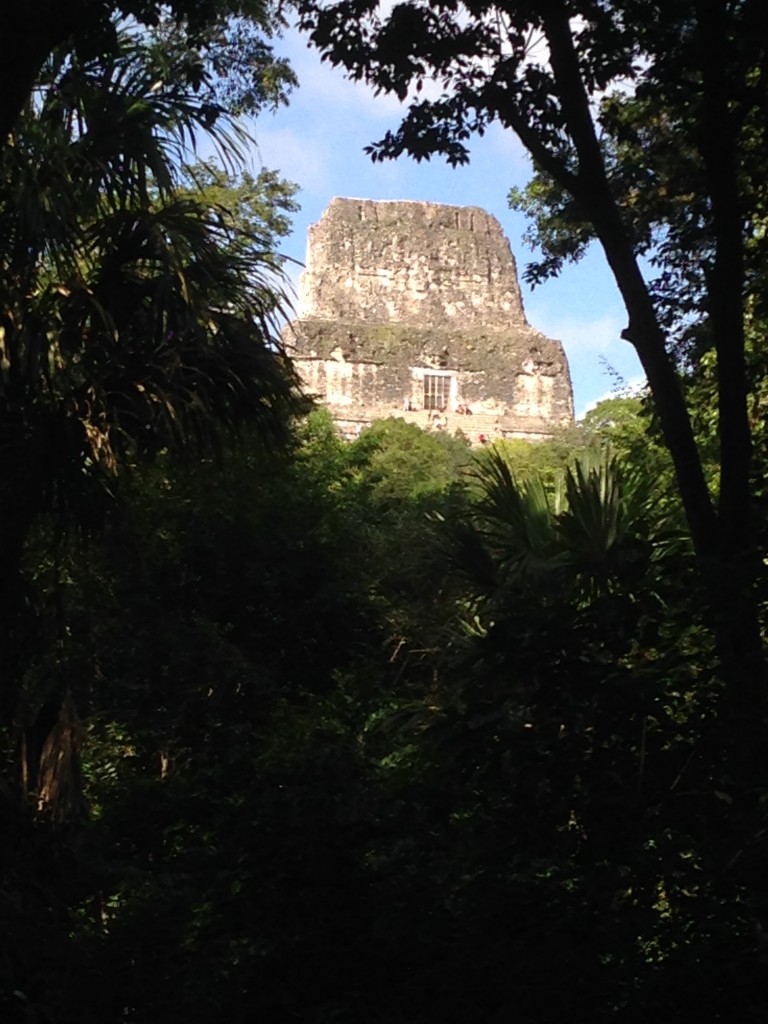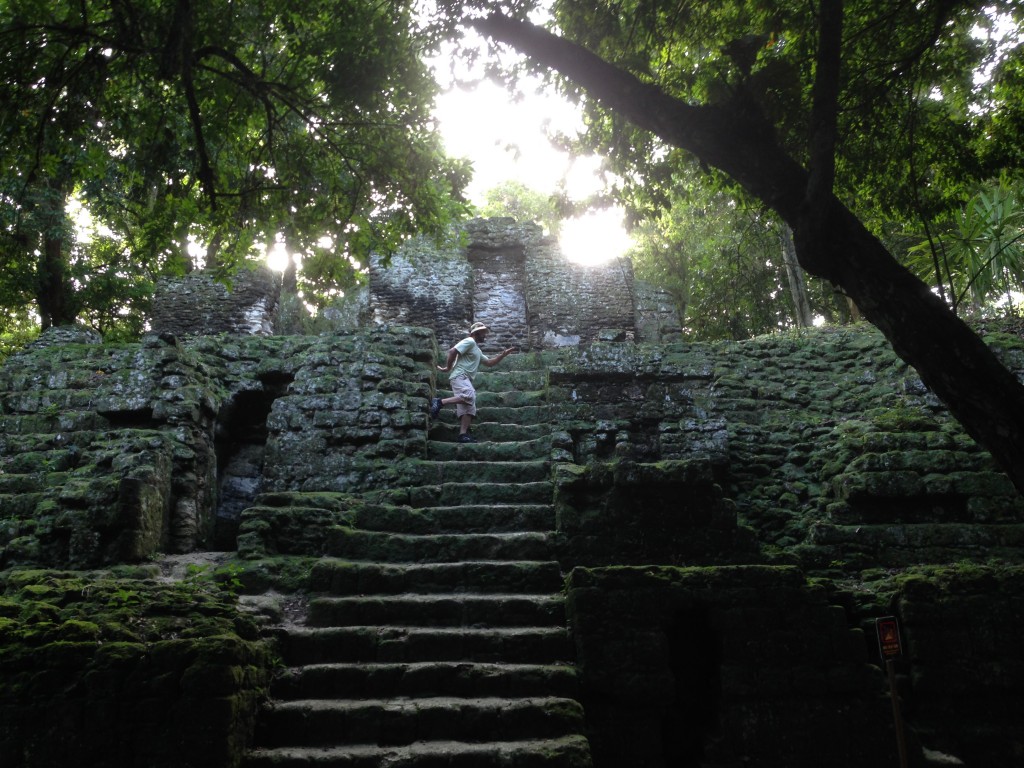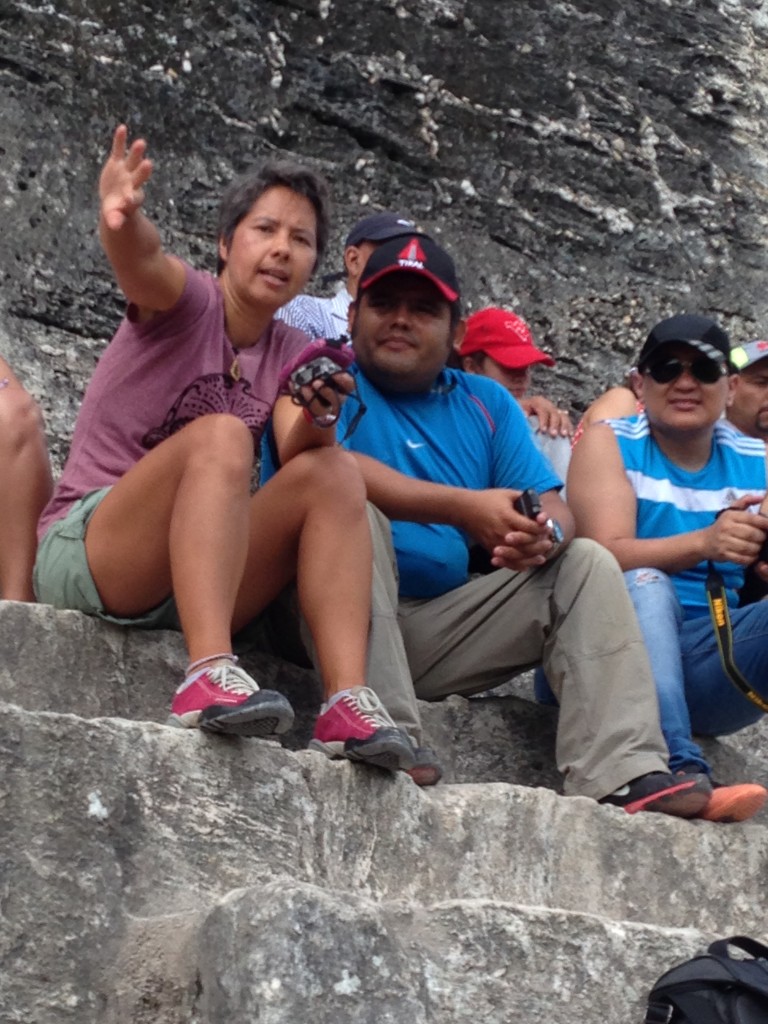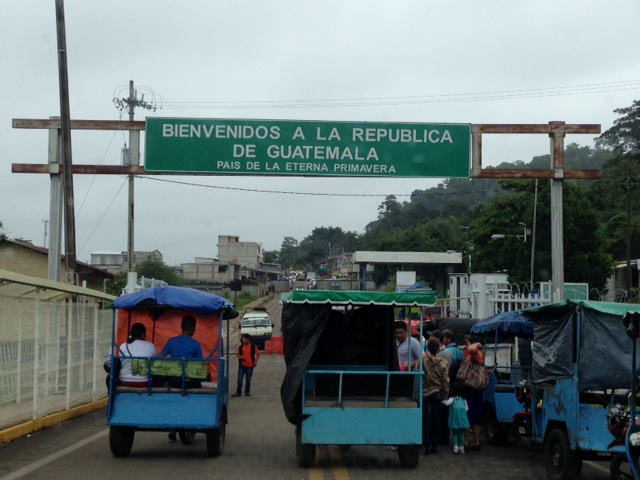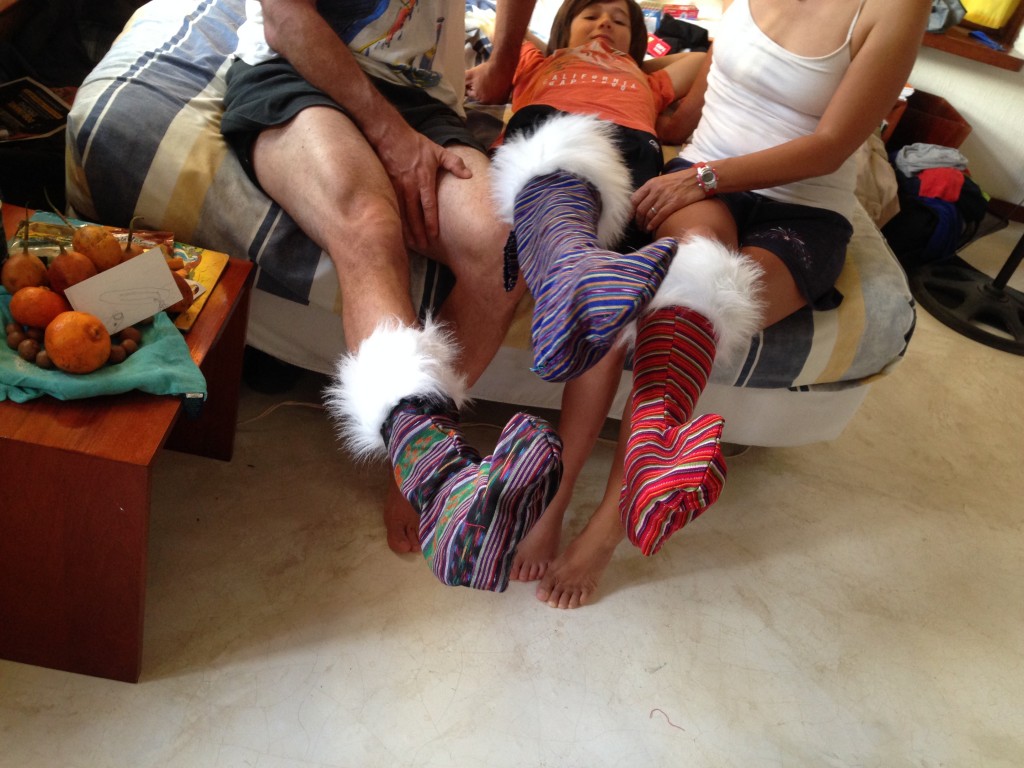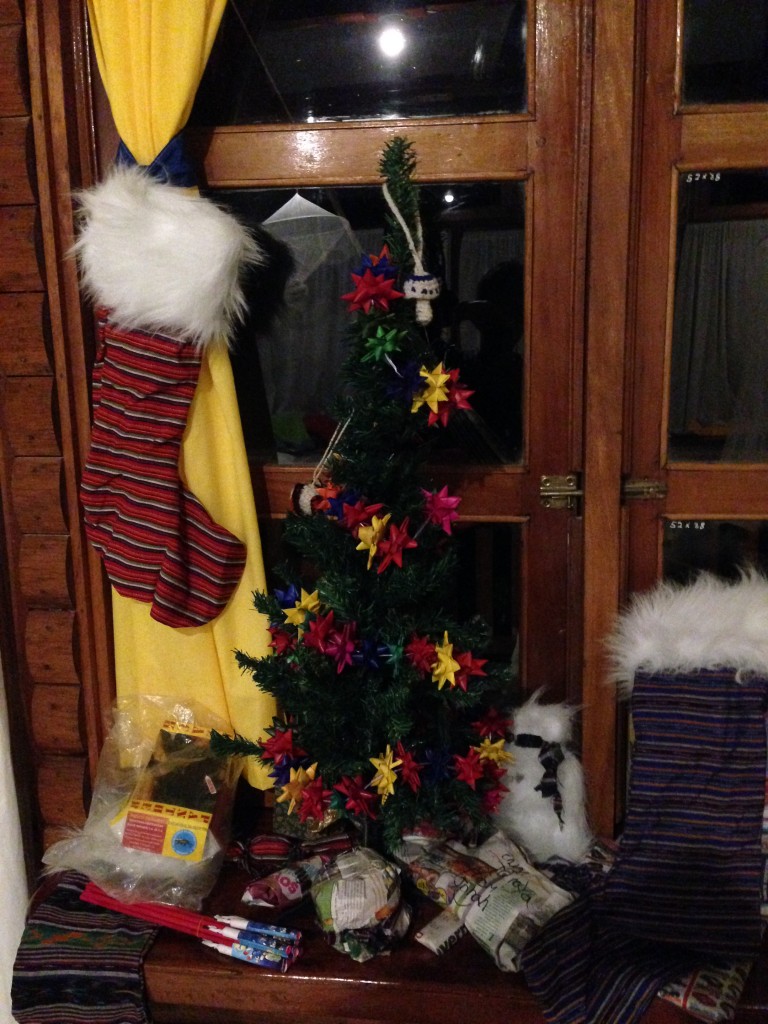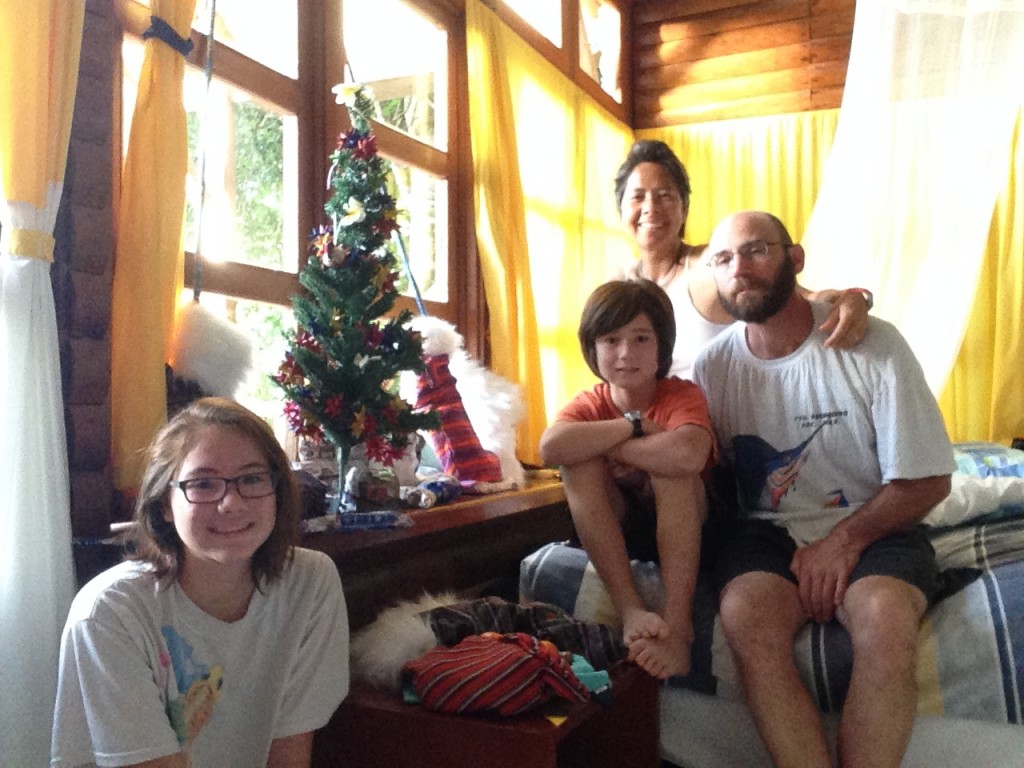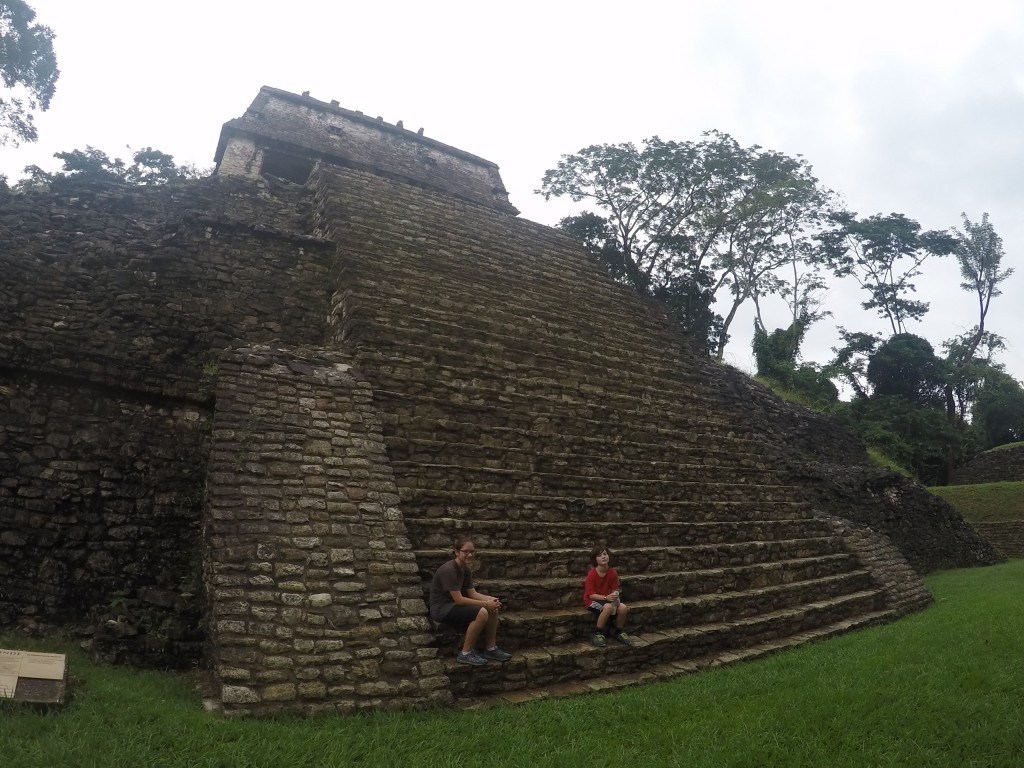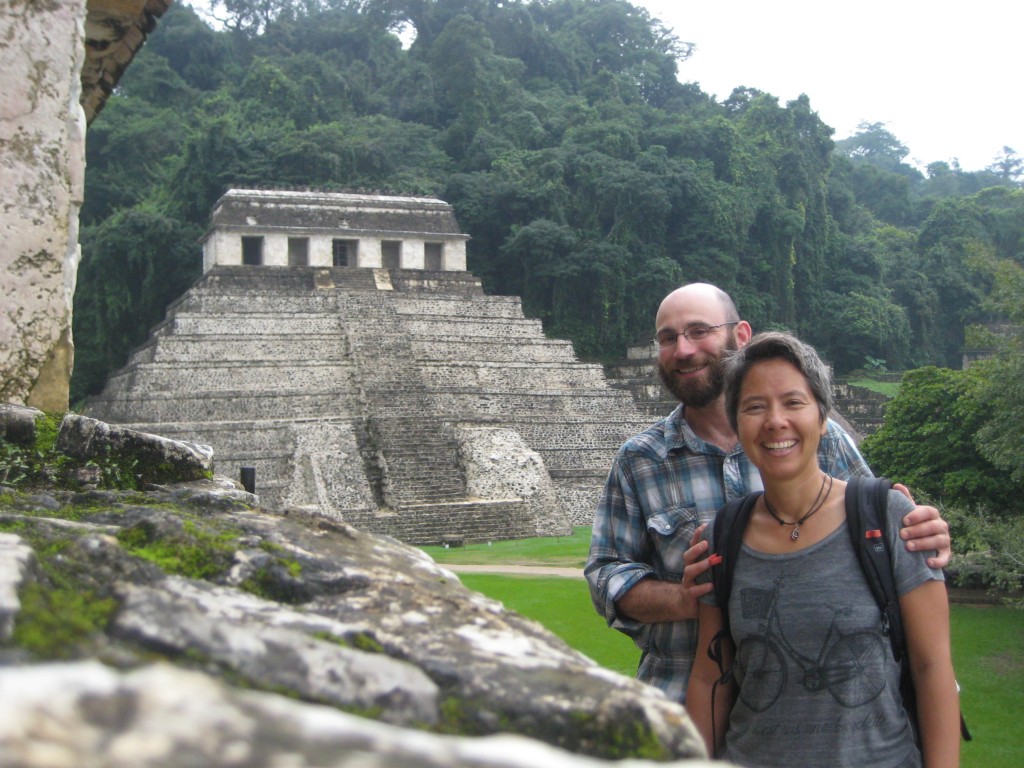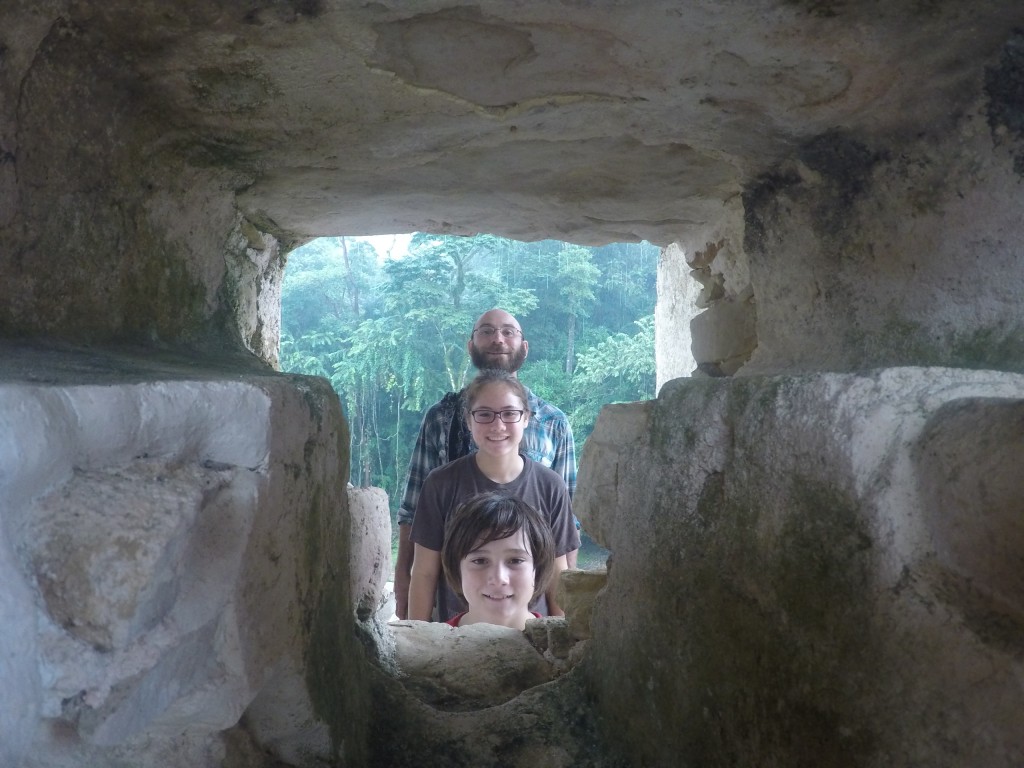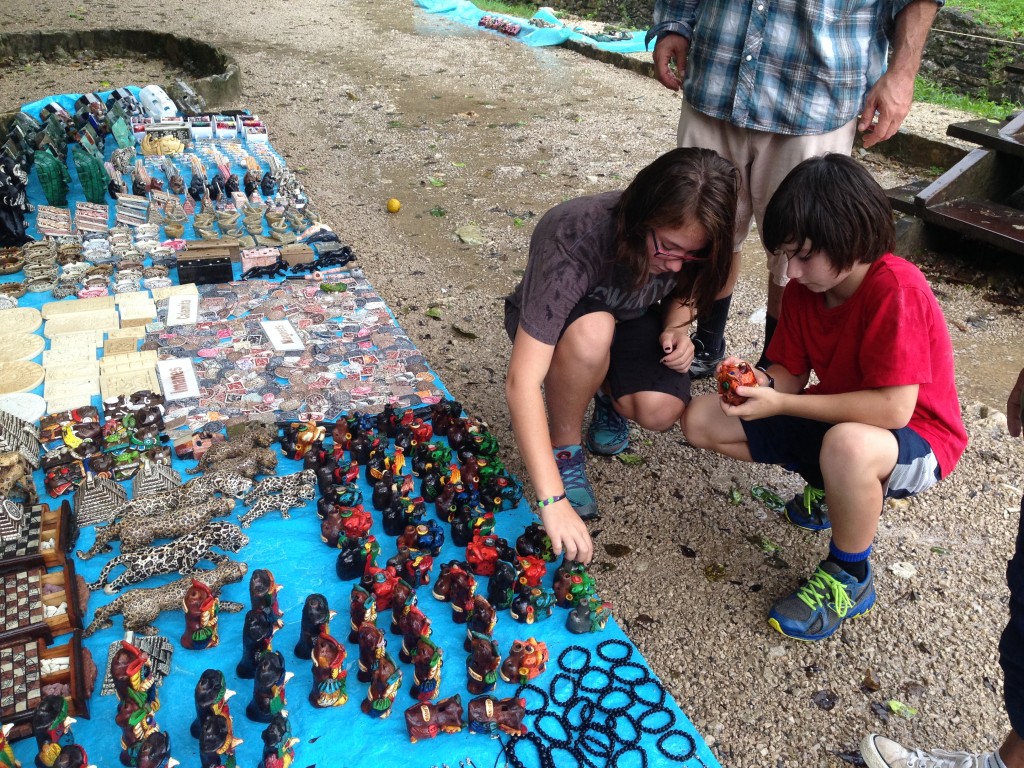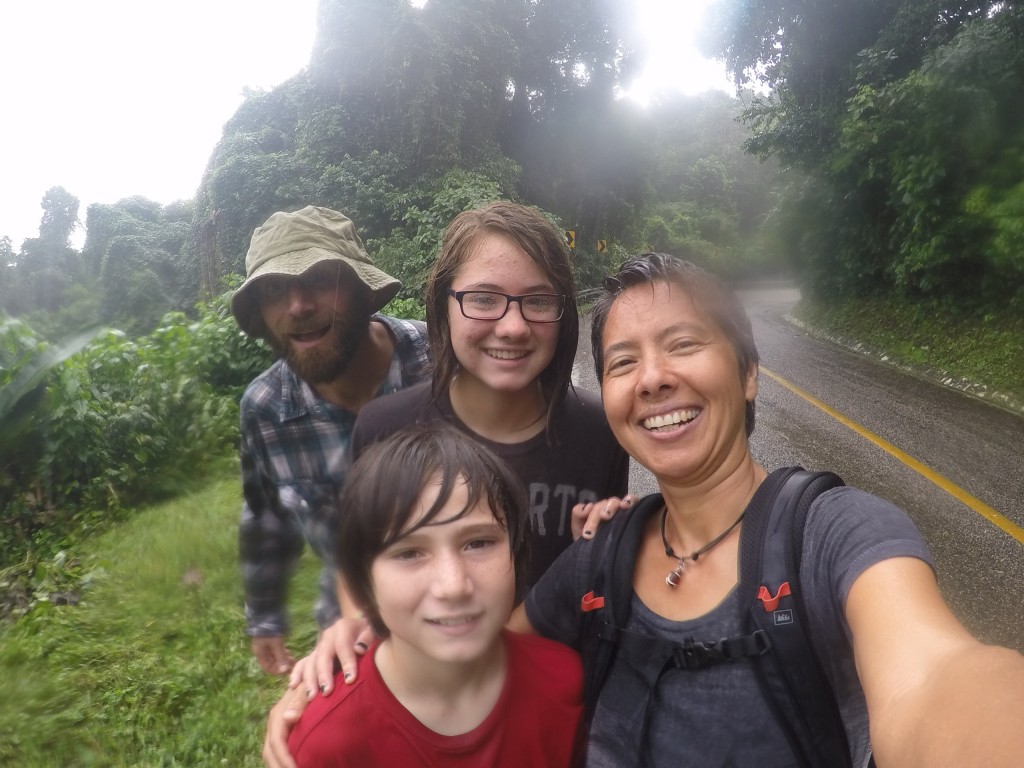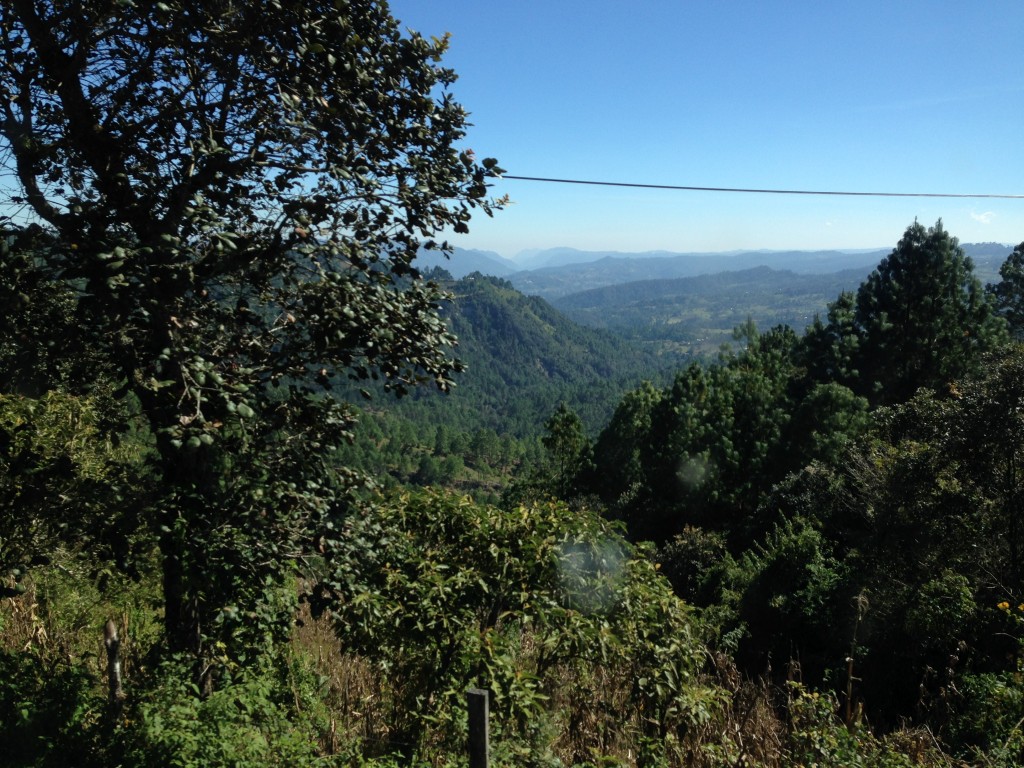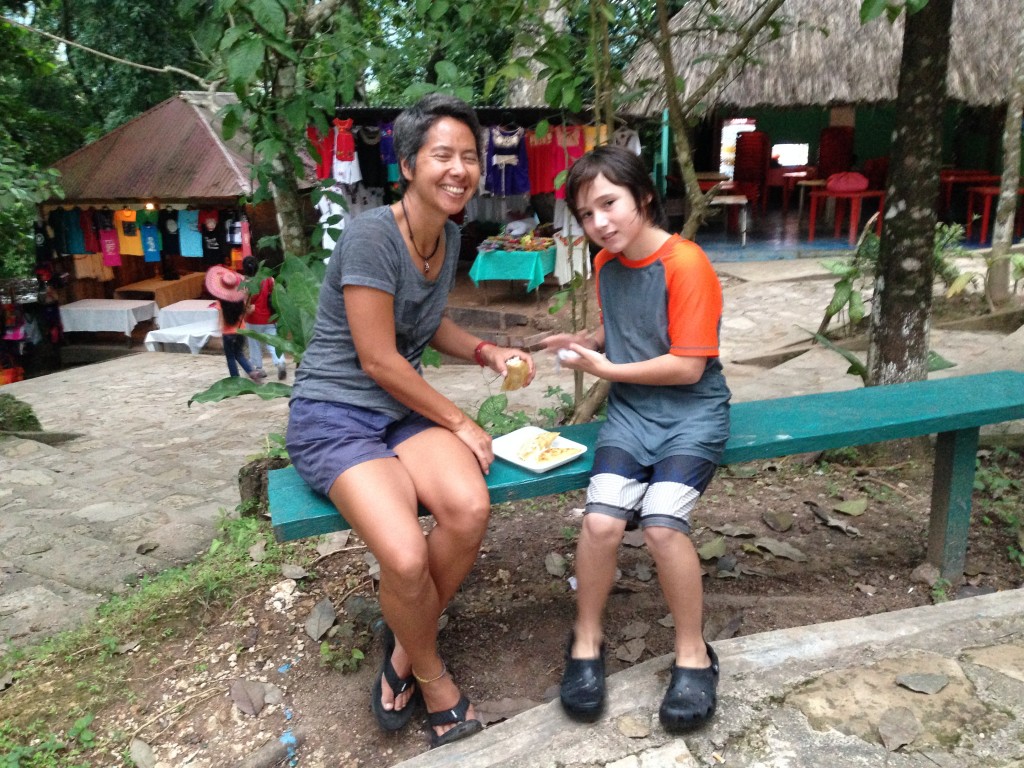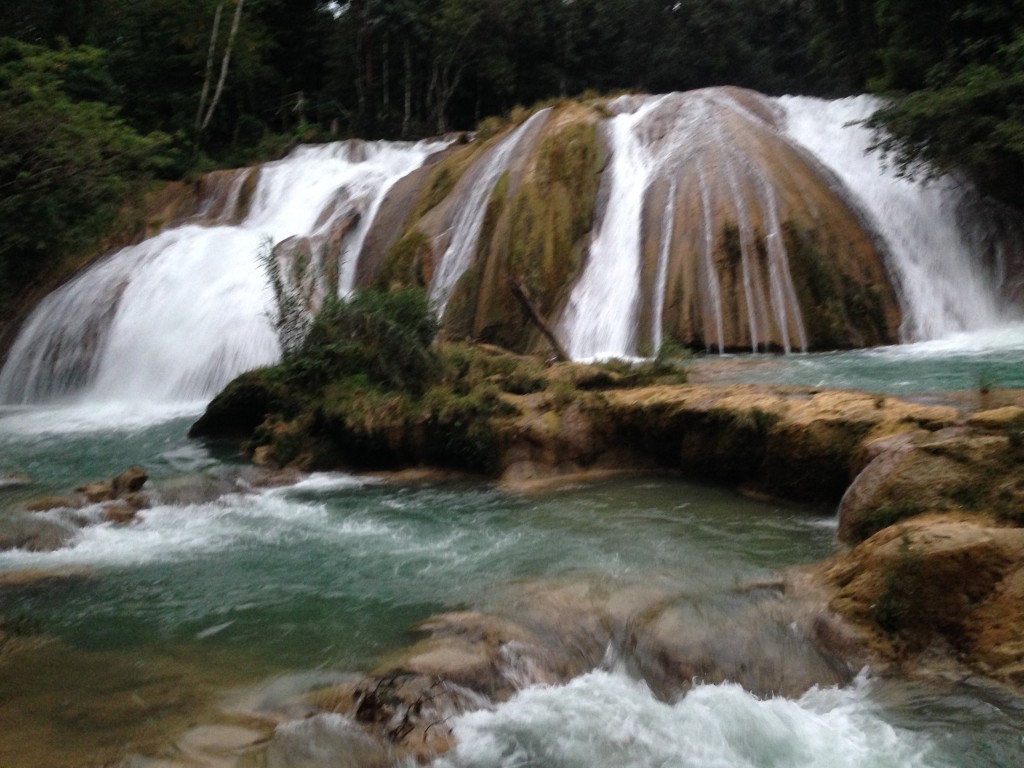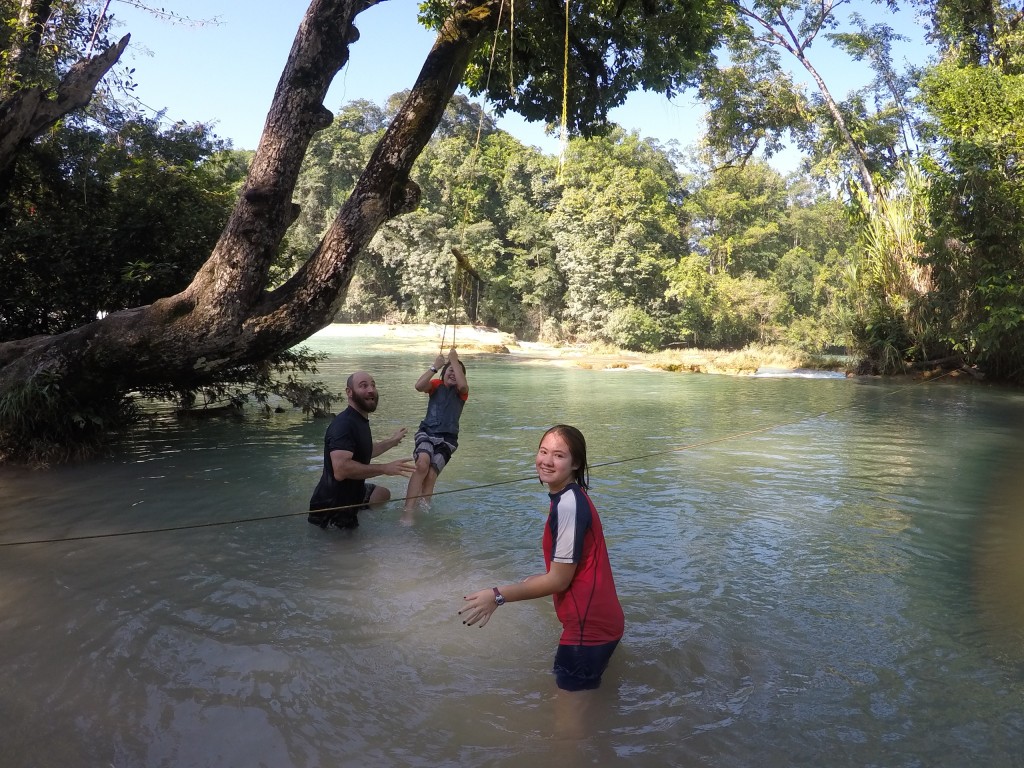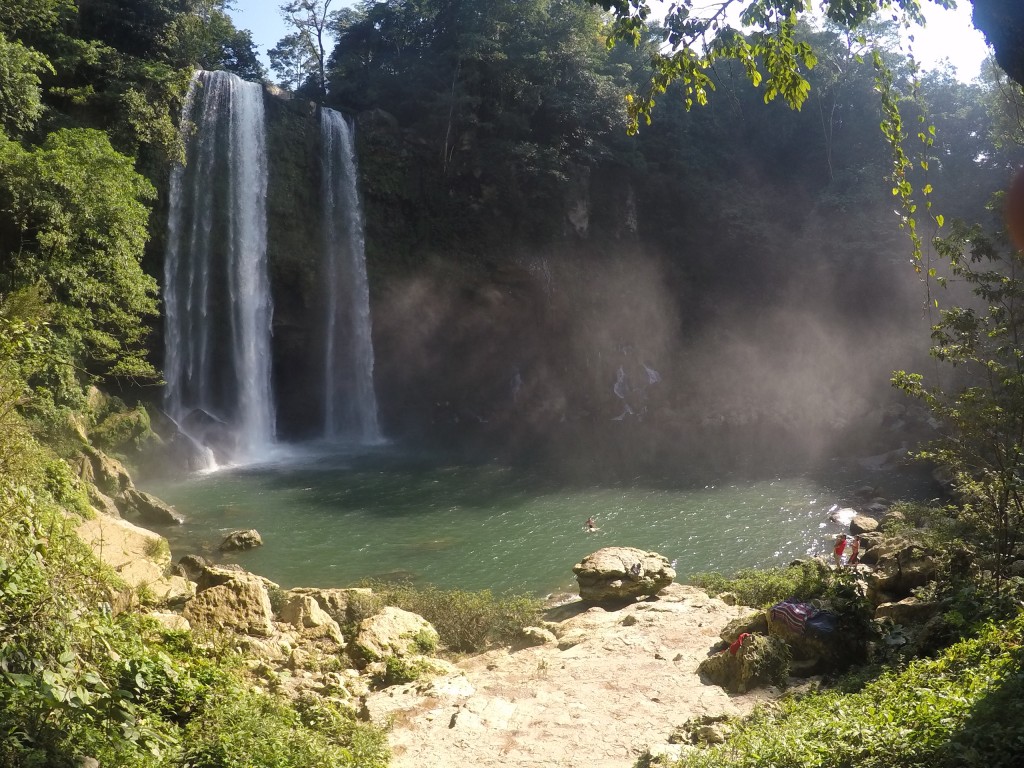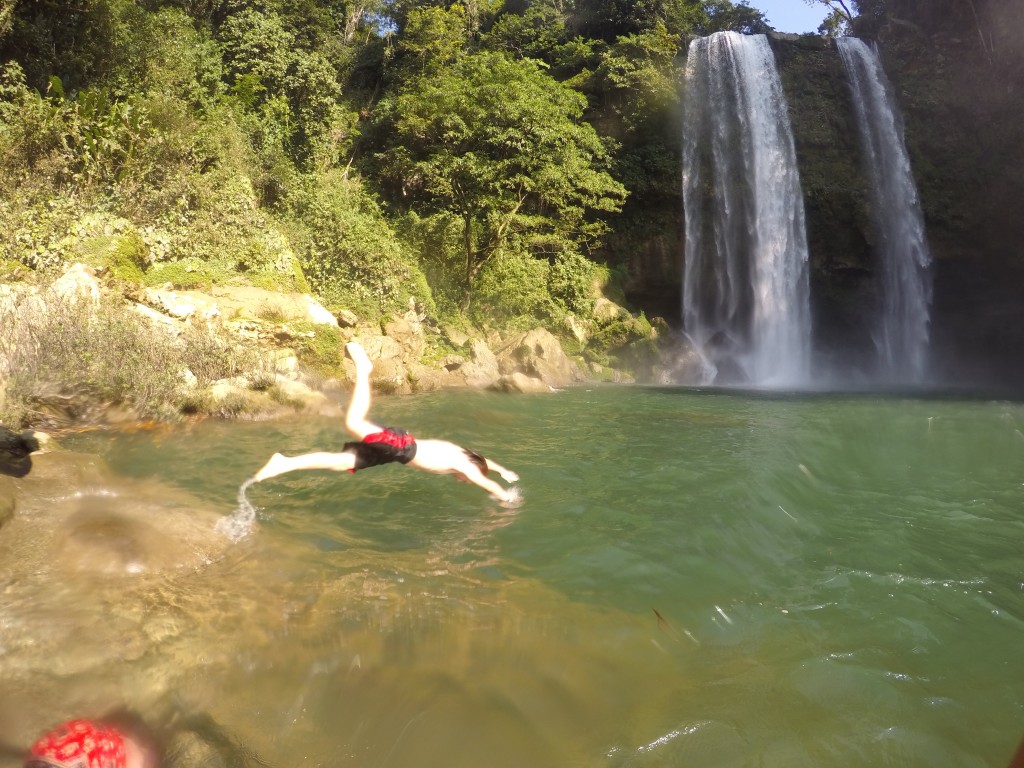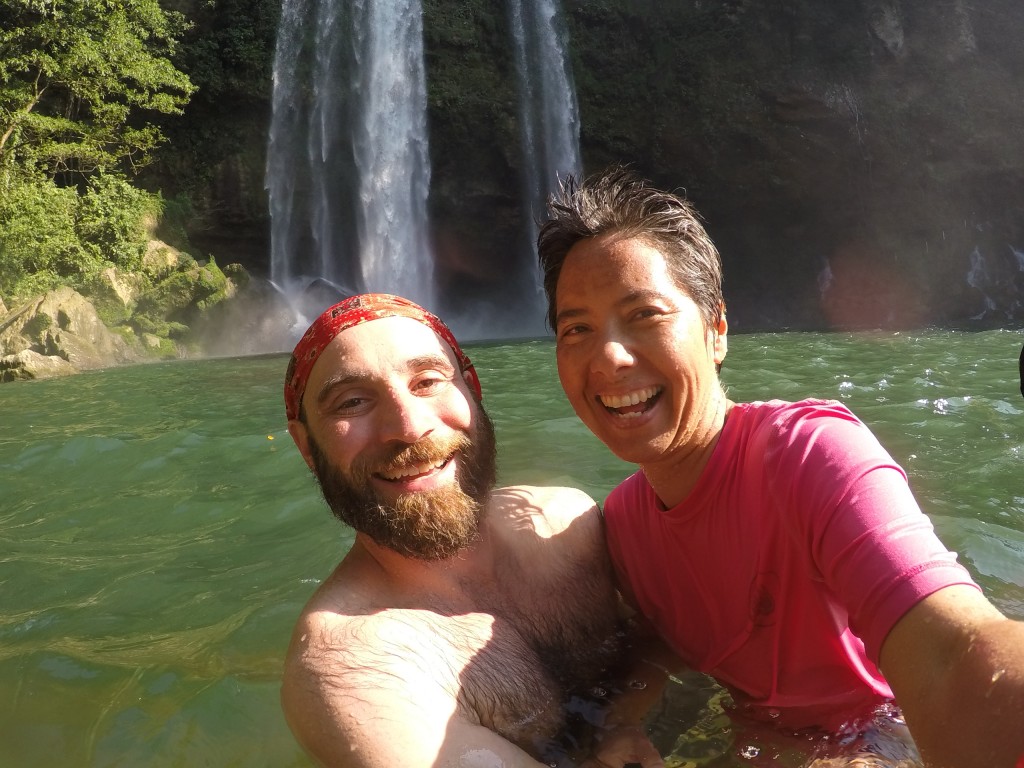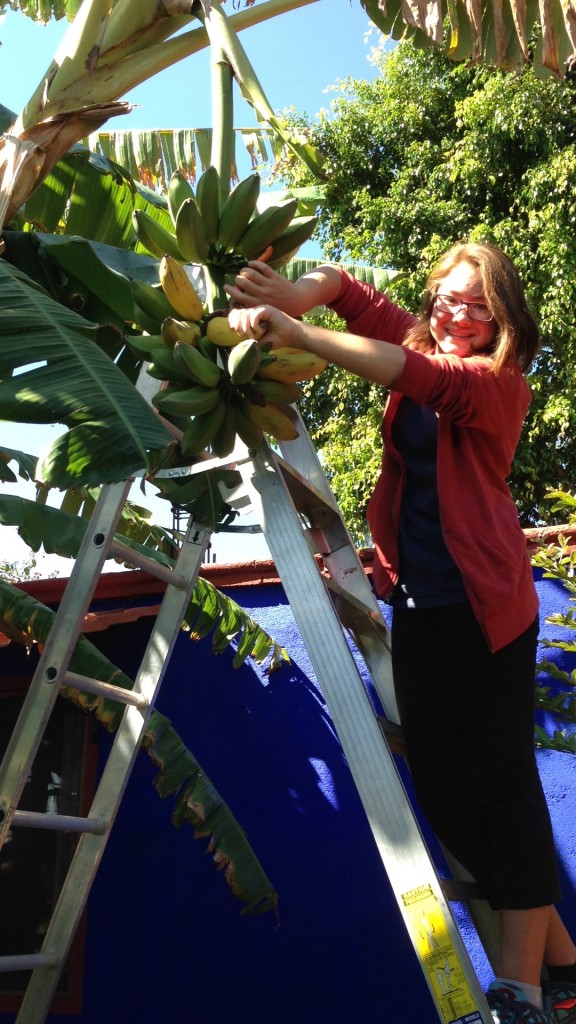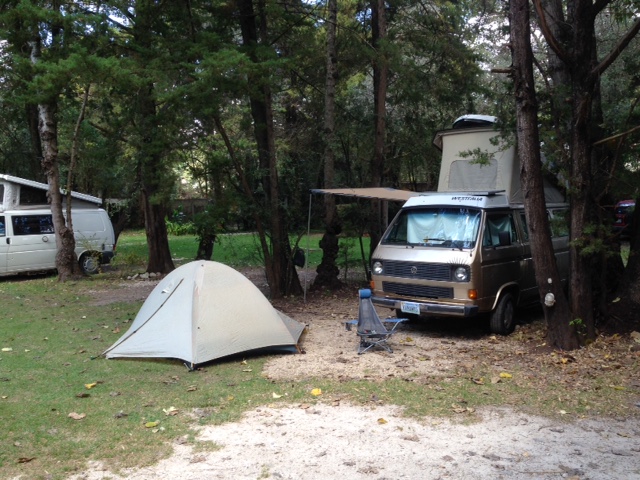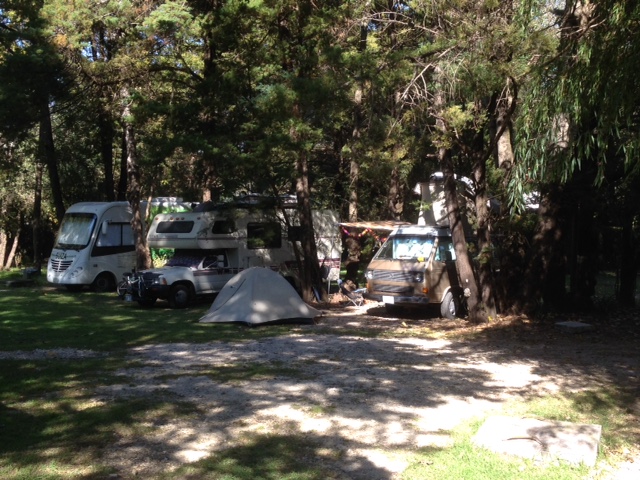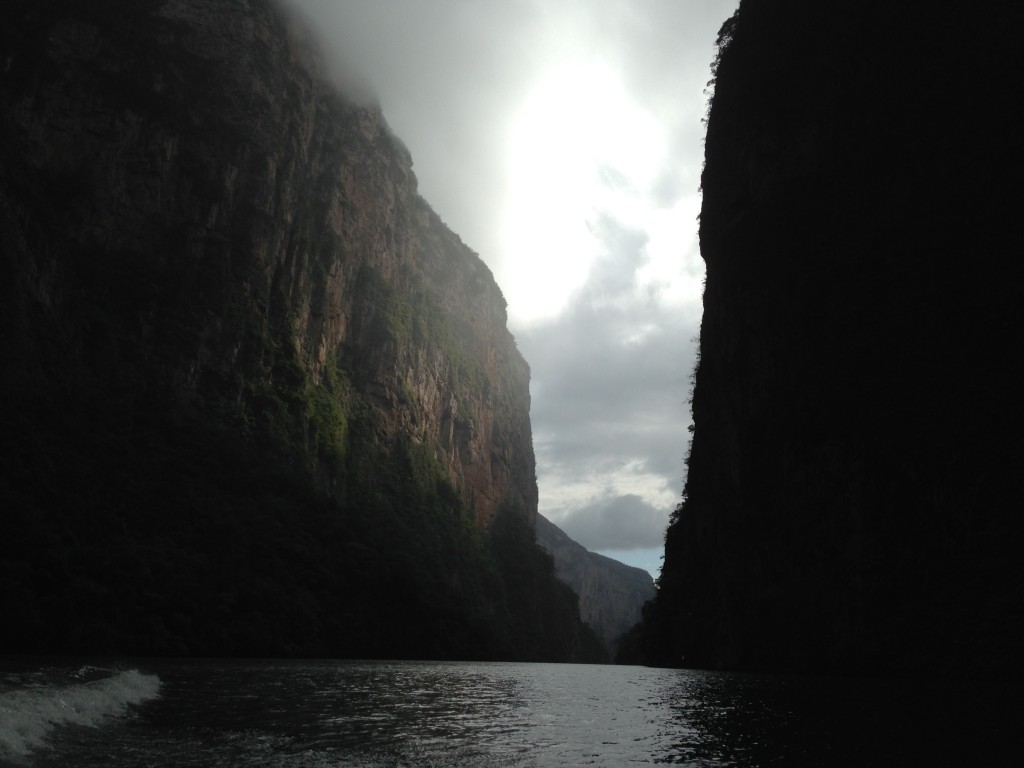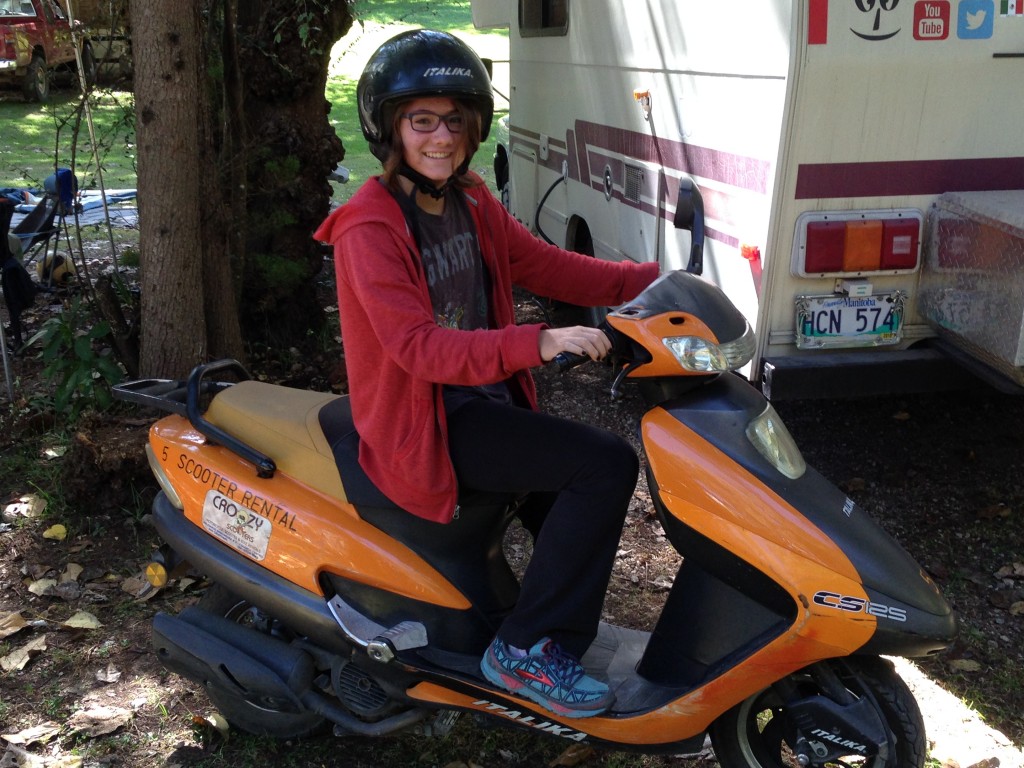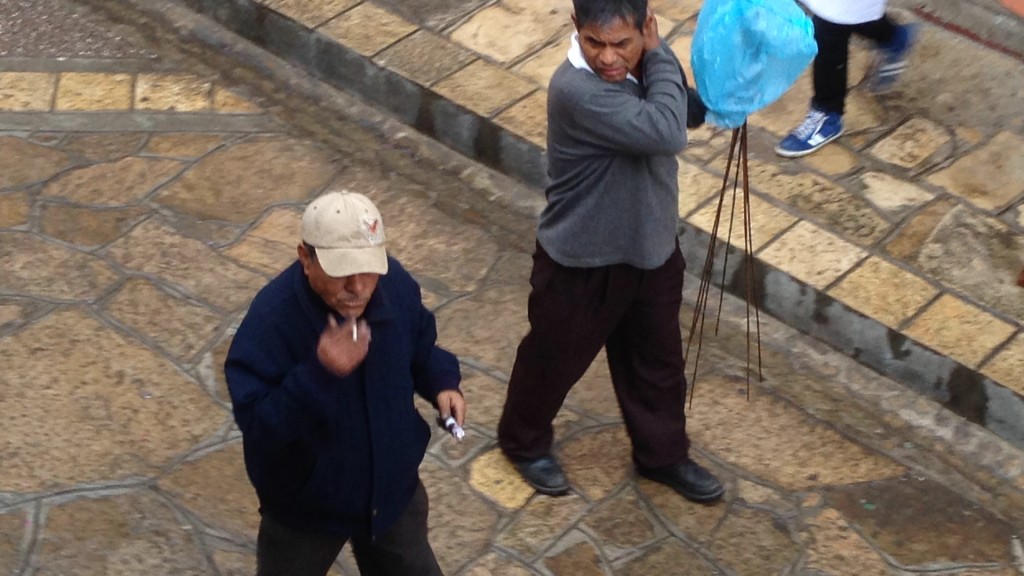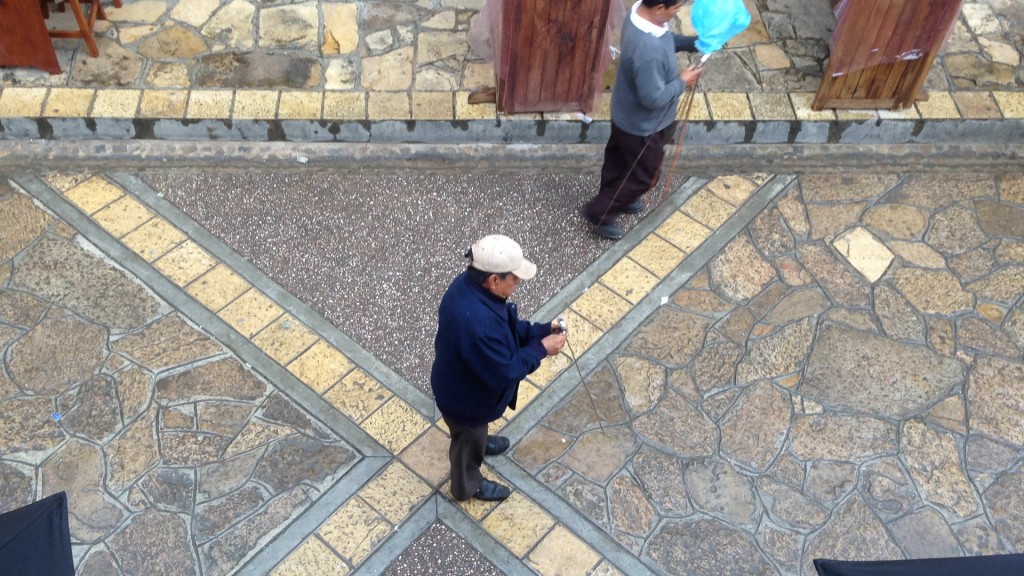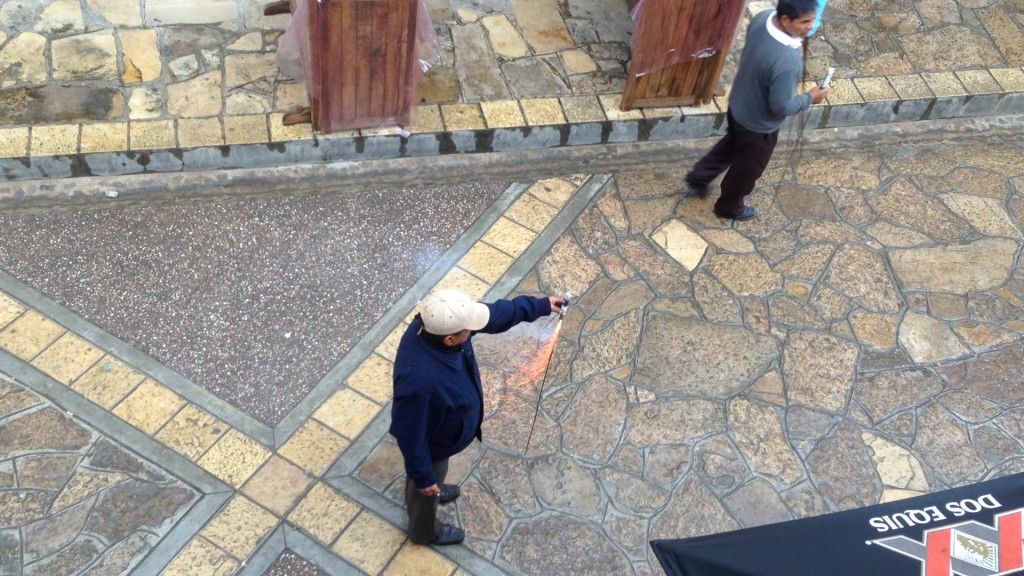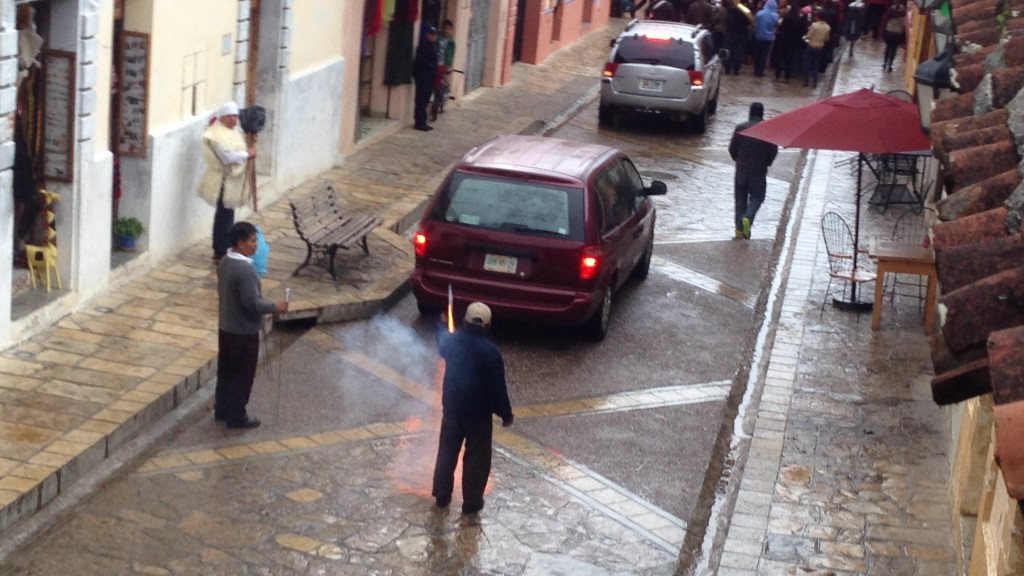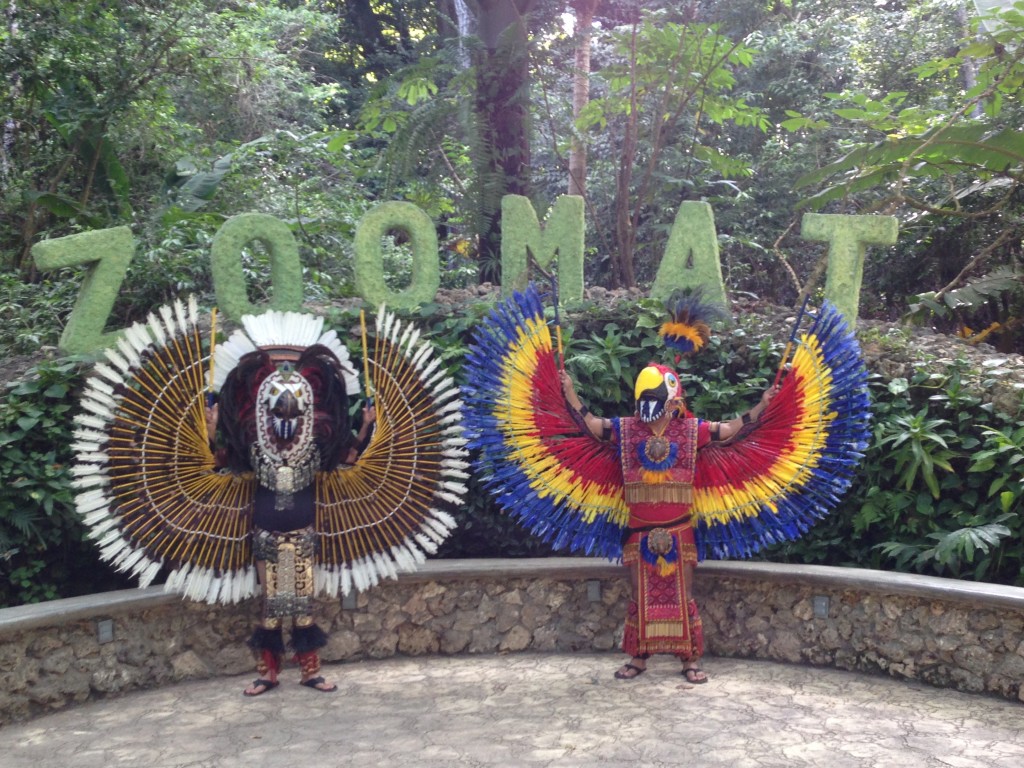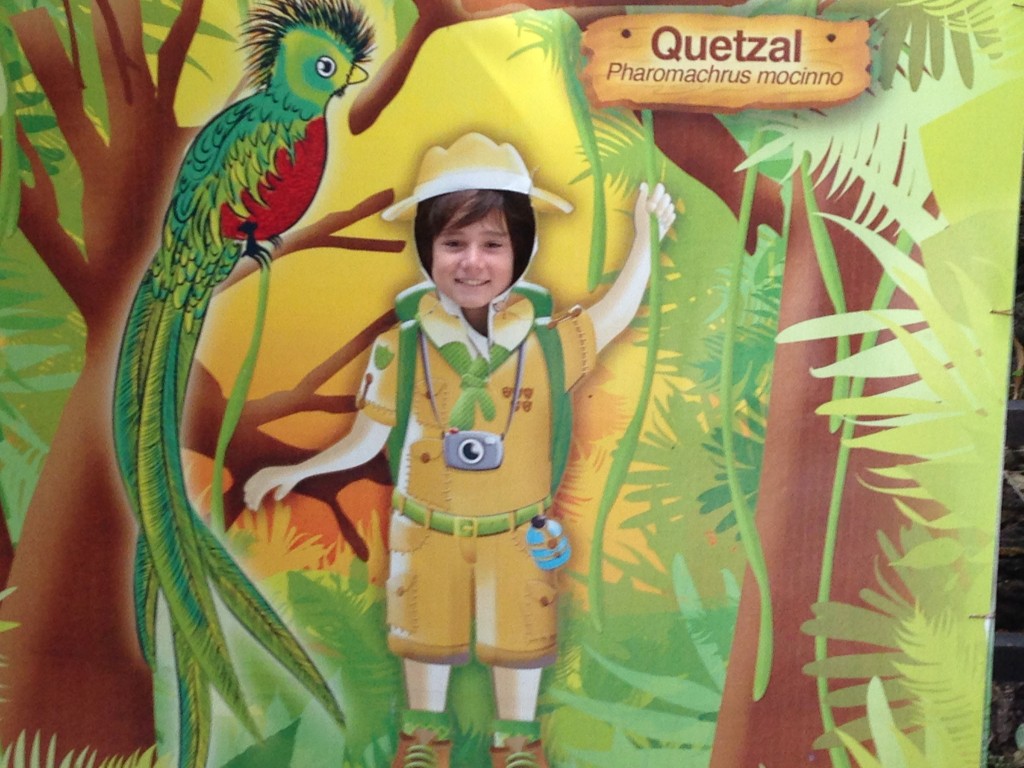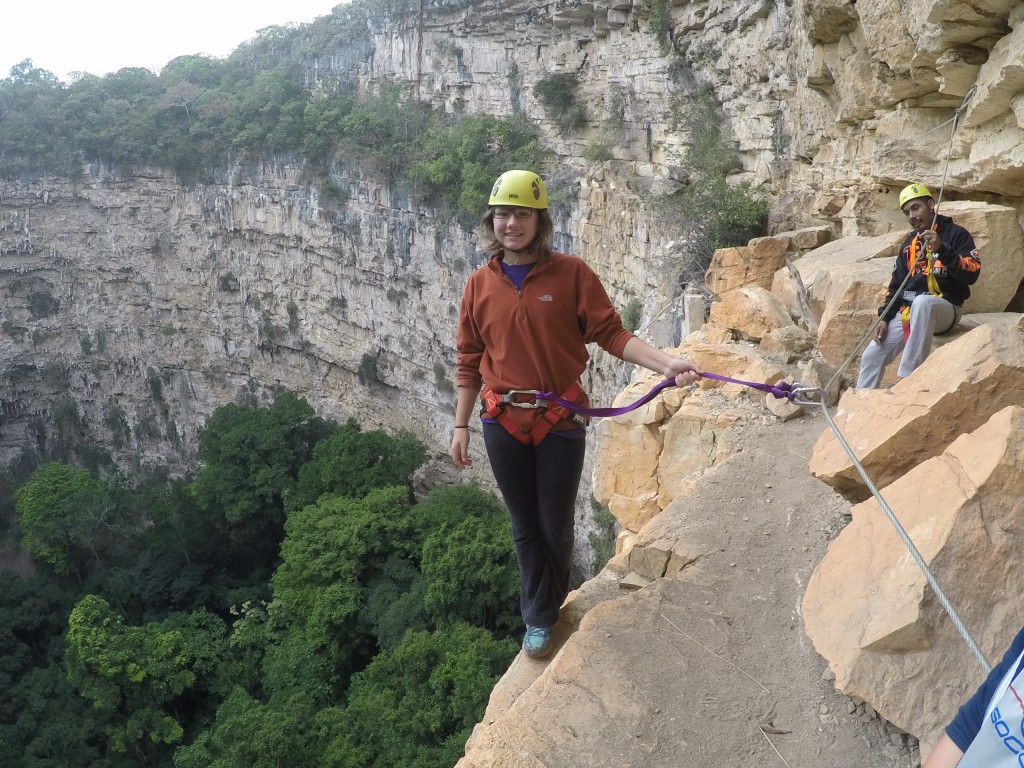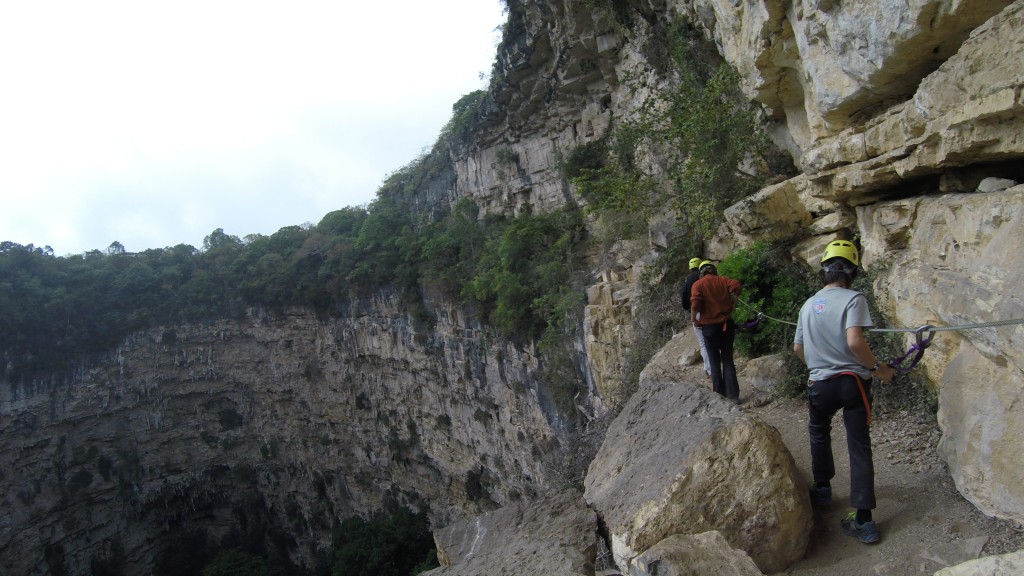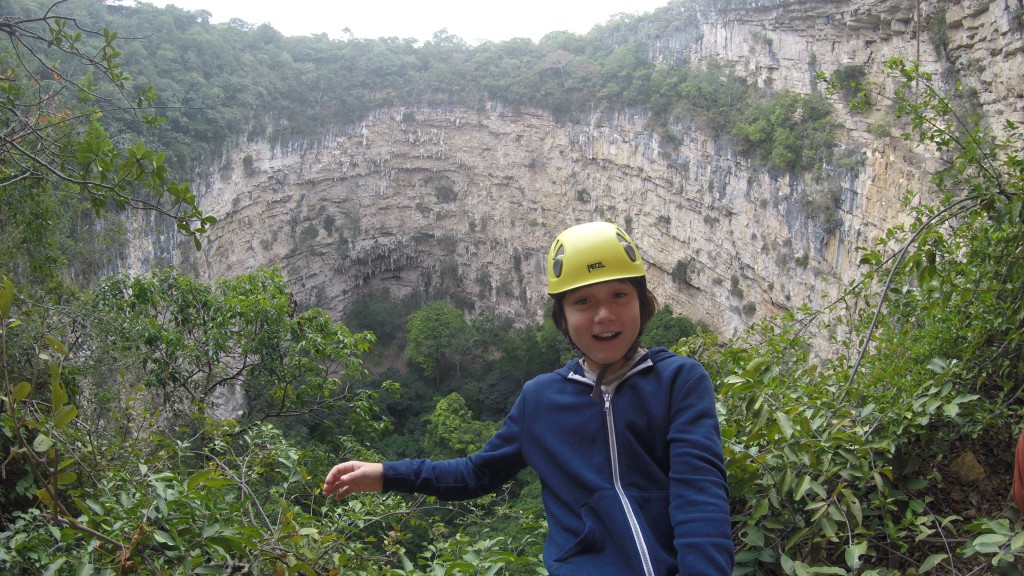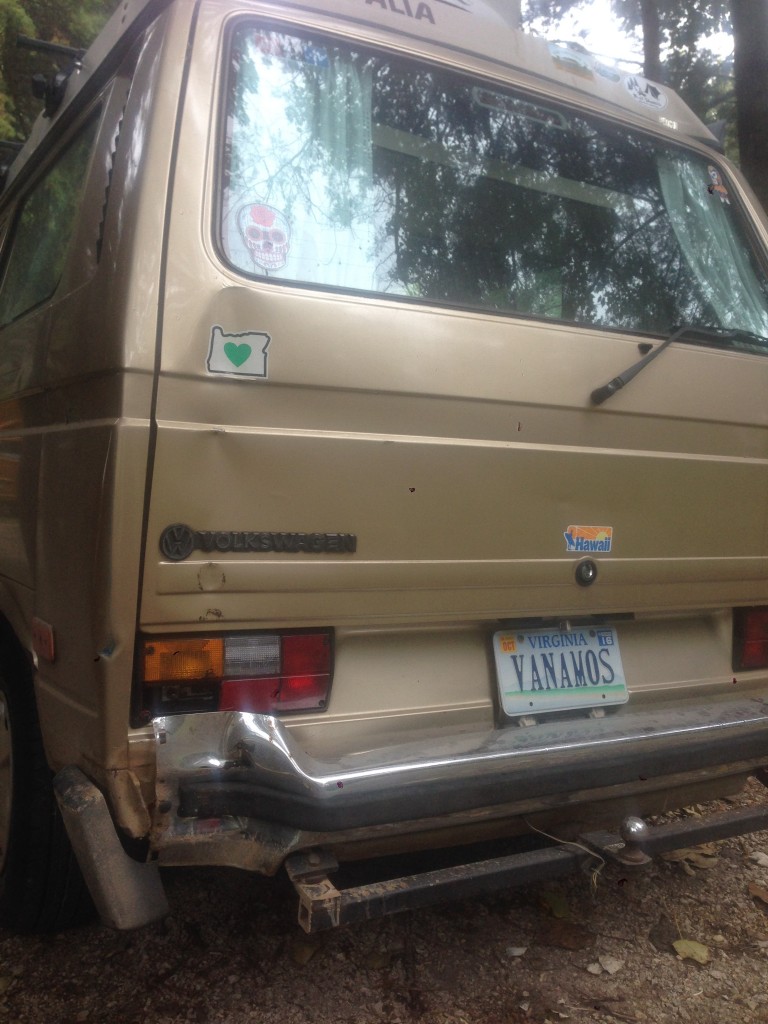My wife, two kids, and I spent the last week squinting into the sun glistening off the waters of Lago de Atitlan, a caldera lake set in the central highlands of Guatemala. Before that we were a week around Lago de Izabel, a vast lake connected by river to the Caribbean Sea and encompassing wetlands, rainforest, and beach, and the week prior to that we spent at Lago Peten de Itza, near Tikal, that mystical jungle nirvana of crumbling stone temples and mosquitoes. No one is more qualified than we are to rate, in two thousand or more words, Guatemala’s major bodies of water as a family vacation destination so that you can know best how to spend your hard earned Quetzales.
Based on our own customer satisfaction surveys, we have assessed each of the three lakes for whether they are swimmable, campable, drinkable, and on intangibles.
Swimmable is just what it seems - you see a large body of water on a sweltering hot day in the jungle and you want to know, “Am I going to be eaten by crocodiles, or worse, if I jump in?”

Campable relates to the point that we are travelling in a VW camper van and we want to be able to sleep in our van, or in tents around it, so we don't have to lug all of our important stuff, like scissors, loose change, and soda crackers, to a hotel room. Despite the rules being somewhat more relaxed in Guatemala, it still seems awkward walking through the hotel dining room with your fishing tackle. Then again, how many hotels do you know where the back porch to your room overlooks a swamp?
Drinkable. Lake swimming involves horseplay, which involves laughter, which involves open mouths and swallowed lake water. How sick can you expect to get?
Intangibles includes random thoughts about life on the lakes from a slightly twisted but mostly rational mind.
LAGO DE PETEN ITZA
Lago de Peten Itza is in the northern lowlands of Guatemala, surrounded by mostly dense, tropical rainforest. We spent ten days bouncing between El Remate, a hamlet on the eastern shore of the lake, Flores, a small island in the lake which is a popular gringo base camp for visiting Tikal and which is connected to the mainland by a causeway, and Tikal, the vast Mayan ruins which are not actually on the lake but are close enough that we consider it to be a part. Everyone from Hernan Cortes to Charles Lindbergh has visited this lake, you can read their reviews on TripAdvisor, so it is not a secret destination, but that just means you have more options of hotels, restaurants, and places to buy chachkeys.
We found a lot of things to do for families in this area - you can take boat rides around the lake, visit a zoo and wildlife rehab center, or hike through protected wildlife reserves and through minor Mayan ruins. And then of course, there is the grand daddy of all Mayan sites in Guatemala - Tikal.
Swim. Yes! There are lots of nice spots in El Remate where you can see the lake bottom and the water temperature is warm enough so that even R took a dip. The lake water around Flores is less clean, but people swim there and we could easily have joined them on one of the hot afternoons if we had been wearing our bathing suits. One afternoon we took a lancha to the middle of the lake and jumped in and swam around.

Camp. If you turn off the main road in El Remate onto the other road, keeping the lake on your left, there are several options for camping, including in the Biotopo Cerro Cahui, a wildlife conservation area where I didn’t actually see any wildlife, but I did take in some nice lake views from the mountaintop miradors. The owners of the hotel and restaurant Mon Ami - which was the focal point for most of what we did when in El Remate (eat, swim, and WiFi) - let us camp in their parking lot one night for free and use their toilets.
Flores is a concrete jungle and has no formal campgrounds. However, there are plenty of hotels and every night we rented a room either R or I slept in Wesley in the street. If it was just R and I and we didn’t have to pop the top for the four of us to sleep in the van we probably could have slept for free every night. As far as food, there are plenty of restaurants that have good grub for cheaper than you would pay in the States so you don’t have to get the camp stove out and cook in the streets as well, even if you decide to sleep there. Plus, each night comedores set up along the waterfront sell cheap, cold tacos, and crunchy tostados with a variety of toppings to choose from, including beet salad.
You can camp in the large, grass parking lot at Tikal, or stay in one of the two overpriced hotels on site. You can not bribe the guard to sleep at the top of Temples I through IX.

Drink. I peed in the lake a few times, but I would still have a glass. We did see a cow jaw bone at waters’ edge near San Andres, but chances are you won't visit this town on the northern edge of the lake so won’t have to wrestle with this uncomfortable fact of life.
Intangibles. We heard this area is one of the more expensive places in Guatemala, but we have been hemorraghing money every place we’ve been so we didn’t really notice much difference. Nobody drowned when we rented paddle boards on Christmas Day so it was memorable in a good way.

LAGO DE IZABEL
This lake is enormous, requiring more than 3 hours and a hundred dollars to hire a boat to take you from the wetland habitat of the Reserva Bocas del Polochic at the western edge, through the river gorge around the town of Rio Dulce in the east, and to the town of Livingston, which lies at the mouth of the waterway, where the river meets the Caribbean coast.
Because we were not impressed with Rio Dulce, we visited the town of El Estor, at the western edge, and hired a boat to take us to see manatees, monkeys, and the Russian nickel mining operation which is dumping toxic chemicals into the lake and pumping colorful smoke into the sky. This was a highlight of our visit.
We also stayed at a jungle lodge at the mouth of the river gorge which had a rope swing, a ping pong table, and bed bugs. It was also a jumping off point to visit Livingston, which is supposedly a cultural experience unique in all Guatemala because the residents are more similar in appearance and custom to their Caribbean island neighbors, but it didn’t feel all that different than walking around by the city courthouse near 7th and Pennsylvania, N.W., in Washington D.C.
Swim. No one likes gas trails in their lake water but rope swings are cool even if you come out of the water feeling like an oil slick. We did not swim at the Livingston beaches and although the word was that swimming at the opposite end of the lake near the wildlife reserve was good, the water there was dirty as well because villages along the rivers that feed into the lake use the rivers for things like trash disposal.
Camp. The only place we found to camp in our van was a muddy, noisy marina parking lot in Rio Dulce. We skipped it. There are lots of neat sounding jungle lodges tucked here and there around the lake but most are only accessible by boat. For us, this meant finding secure parking and the hassle of packing all the stuff we might need into overnight bags. The other annoyance about this arrangement is that you are subject to the monopoly of the hotel over food, drink, and what not.
Drink. You would have to pay me a lot of money to drink eight ounces of this stuff.
Intangibles. If I ever die, I want to come back as a boat operator on this lake, as it gives meaning to the phrase - nothing in life is free. Even the jungle lodge hotel where we stayed charged us a boatload of money to shuttle us to and from Rio Dulce. I was afraid to mention to the management that I got attacked by bed bugs for fear they might charge me per bite. El Estor was one of the dirtiest towns I’ve seen in Guatemala, with trash lining either side of the street, dogs with open wounds roaming the fields, and lots of plastic bottles and diapers washed up on the shore. The waterfall at Finca El Paraiso, near El Estor, had natural hot springs feeding into the falls and we got to jump off the waterfall, which was fun, but the beauty of the place was underwhelming.
LAGO DE ATITLAN
This lake may or may not have been formed 85,000 years ago due to volcanic activity and tectonic plate shifting. What is known though, is that the lake is filled with water, and that population growth, the proclivity of the people to enjoy unhealthy snack foods like barbecued, pig-flavored, Tortrix, the introduction of non-native species into the caldera to promote sport fishing, and wastewater runoff from agricultural and tourist endeavors, have caused the lake waters to become susceptible to increased production of algae spores which require the formation of NGO’s to raise awareness among the many rich Americans that visit the area.
Based on my experience, I’ve been here a week, the villages around the lake are inhabited by traditional Mayan peoples who continue to practice the trades of deforestation and subsistence farming, while the fancy houses that dot the hills are owned by rich people who rent them on AirBnB for hundreds of dollars a night. We stayed in one of those places.
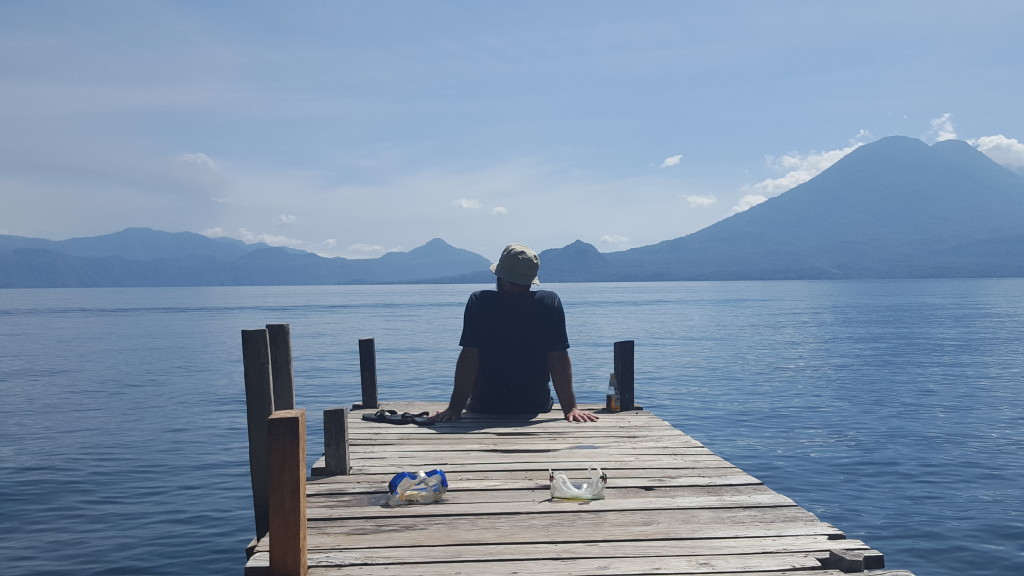
Swim. Yes, but only because we’ve spent hundreds of dollars a night on a lake front villa and there is nothing else to do. The lake is deep, averaging over 600 feet, and the water temperature ranges from “freezing”, to “quite a bit colder than freezing”, to “I can’t believe I’m swimming in this”, to “Hey, do I still have a face because I can’t feel it anymore?” There is one spot in San Marcos, one of the lake villages that is accessible by a long strenuous hike or by a short expensive boat ride, where you can pay to jump off of a wooden dock into the lake thirty feet below. Of course, we paid to do this, but only J and I jumped.
Camp. Many of the villages are built on the side of the mountain and are only accessible by boat so we had to leave Wesley parked in a field in Panajachel, which is the nearest big town that has a road going to it. There is tent camping at the Reserva Natural Atitlan in Panajachel, but since we were staying at a fancy AirBnB place, we only did the zip lines. You can catch boats to all other parts of the lake from Pana and the villages each have their own identity - drug town, meditationville, old, rich, white people place, etc..
Drink. There are certain areas of the lake where it is not recommended that you allow your body to touch the water, but in other areas, swimming is okay. I take this to mean, drink the water at your own risk.

Intangibles. If I die and I can’t come back as a boat operator on Lago de Izabel, I want to come back as a boat operator on Lago de Atitlan. The lake is beautiful, hemmed in by three volcanoes and countless other less threatening peaks, and hikes around the mountains offer some truly spectacular views that make you think about whether your life has amounted to anything more than a hill of beans. Kayaking is a water activity, but around midday the heat rises from the Pacific Coastal plain and creates a westerly wind that blows white caps across the lake making boating not much fun, and probably dangerous. If you are not into hiking or freezing your ass off in the lake, there isn’t much else to do after noon except laundry and check your bed for scorpions.
And the winner is . . . Lago de Peten Itza! In our view, this lake has it all and is the best spot to visit if you've only got a week in Guatemala. You can swim in it, drink it, camp around it, and completely ignore it to visit Tikal. And the nice thing is that it will still be there waiting for you to come back from wherever you've wandered off too - just like the scorpions we found in Coconut's bed.







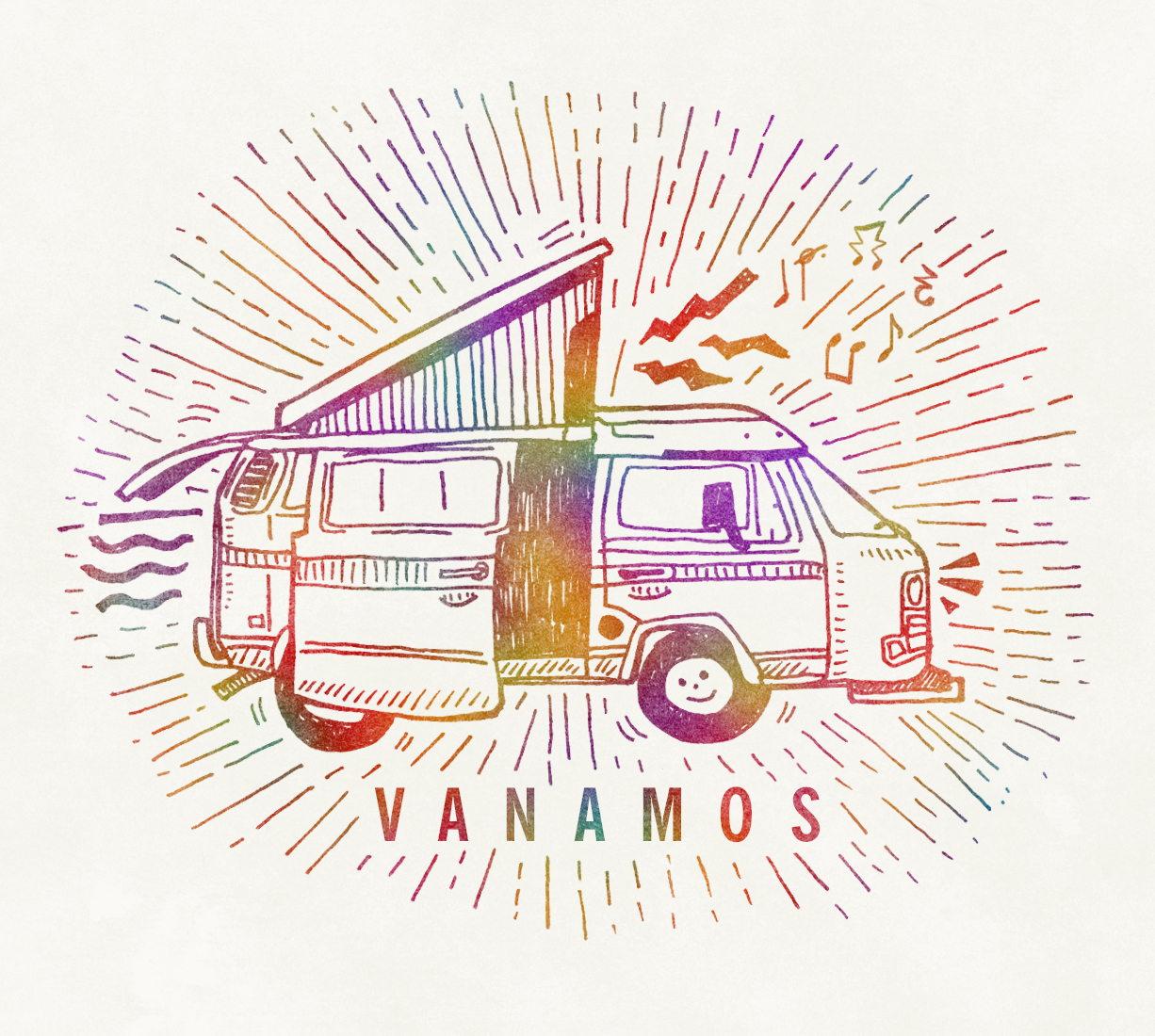










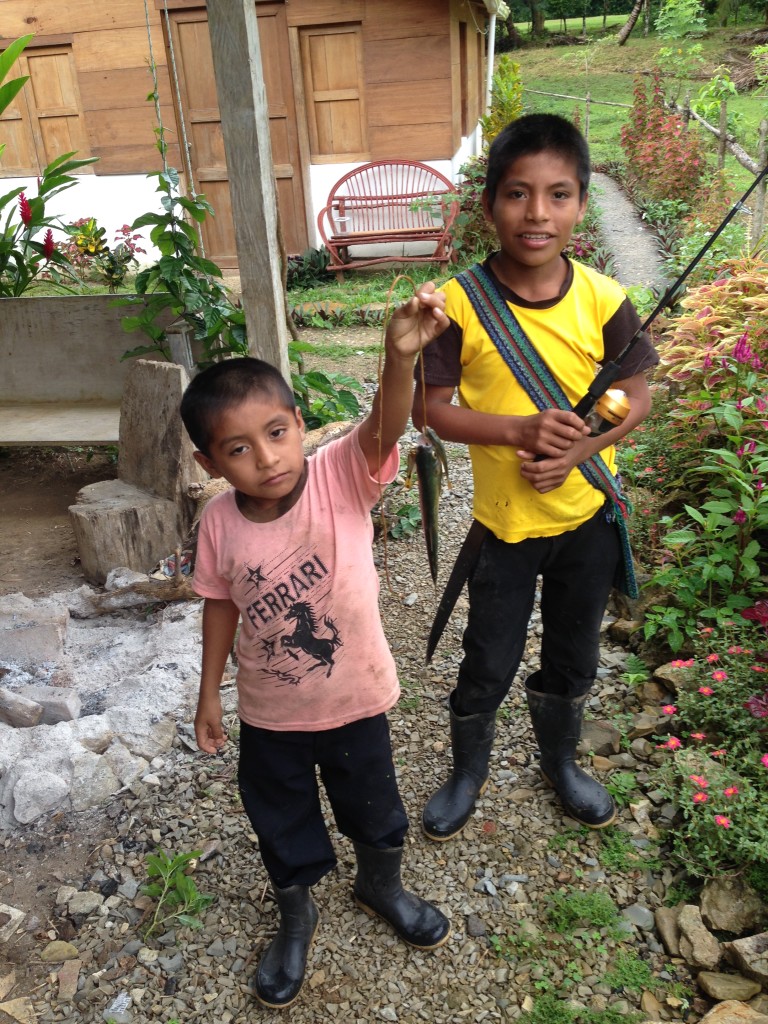
![IMG_2252[1]](http://static1.squarespace.com/static/5771ac0259cc68d56daf44ee/57eea66f2109d3ef120e0420/57eea8402109d3ef120e3231/1475258432431/IMG_22521-1024x768.jpg?format=original) We were worried that she had chikungunya, a relatively new-to-the-Americas mosquito transmitted virus which may or may not cause those infected to scratch in the dirt looking for insects, or Dengue Fever, which is just as horrible. We met a guy from Canada who had both viruses within a few weeks of each other and he didn’t prefer either – said they both made him feel worse than a turd stapled to a garbage can lid.
We were worried that she had chikungunya, a relatively new-to-the-Americas mosquito transmitted virus which may or may not cause those infected to scratch in the dirt looking for insects, or Dengue Fever, which is just as horrible. We met a guy from Canada who had both viruses within a few weeks of each other and he didn’t prefer either – said they both made him feel worse than a turd stapled to a garbage can lid.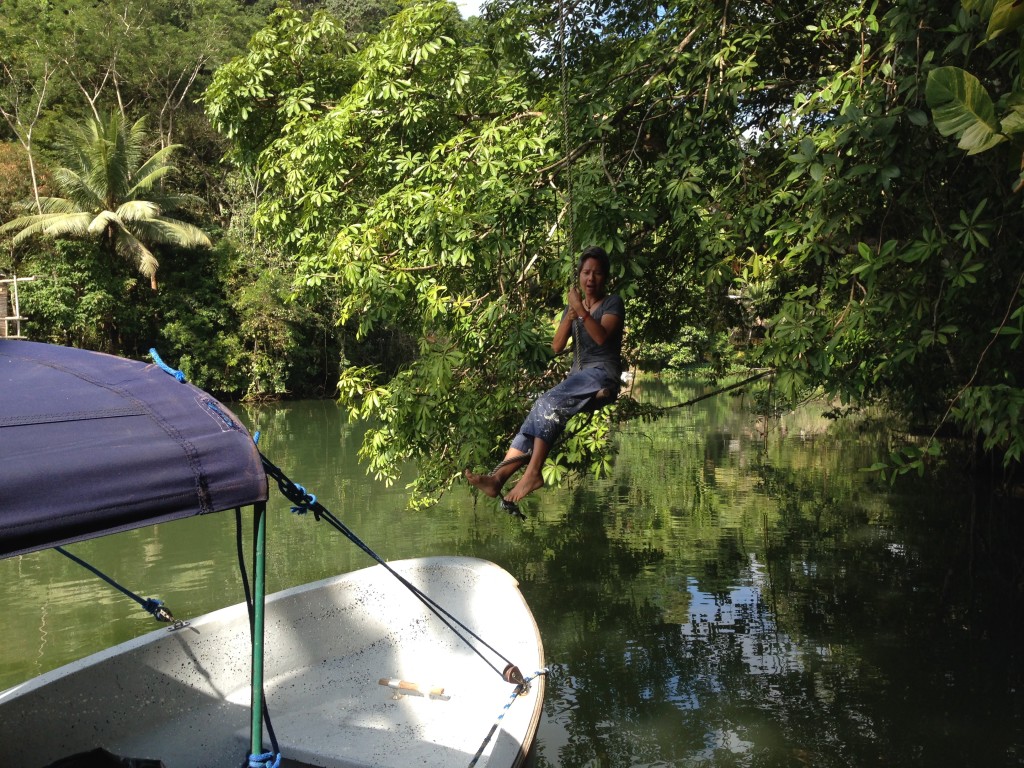
![IMG_2488[1]](http://static1.squarespace.com/static/5771ac0259cc68d56daf44ee/57eea66f2109d3ef120e0420/57eea8412109d3ef120e3235/1475258433413/IMG_24881-e1453000560616-1024x768.jpg?format=original) Livingston turned out to be a ramshackle town providing ample living quarters for pelicans but not much else of obvious cultural significance. The Garifuna culture, at least, has been Westernized enough to give the white oppressors who enslaved its ancestors its comeuppance in the form of overpriced, mediocre soup.
Livingston turned out to be a ramshackle town providing ample living quarters for pelicans but not much else of obvious cultural significance. The Garifuna culture, at least, has been Westernized enough to give the white oppressors who enslaved its ancestors its comeuppance in the form of overpriced, mediocre soup.![IMG_2480[1]](http://static1.squarespace.com/static/5771ac0259cc68d56daf44ee/57eea66f2109d3ef120e0420/57eea8412109d3ef120e3237/1475258433835/IMG_24801-1024x576.jpg?format=original)
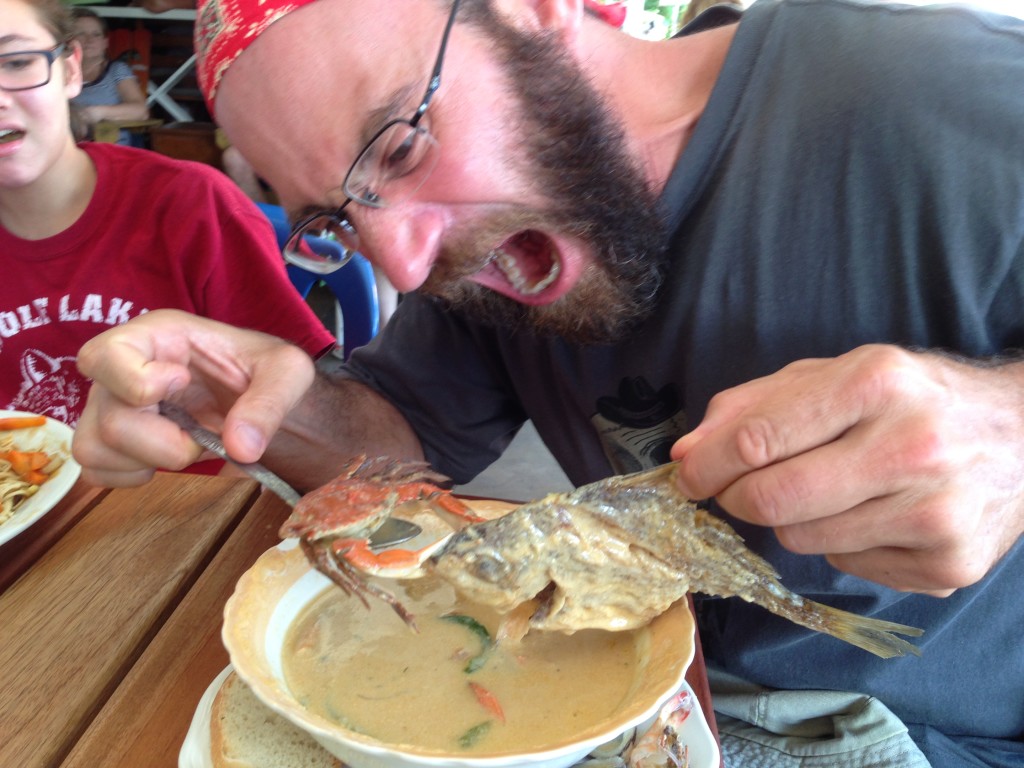
![IMG_2520[1]](http://static1.squarespace.com/static/5771ac0259cc68d56daf44ee/57eea66f2109d3ef120e0420/57eea8422109d3ef120e323b/1475258434702/IMG_25201-e1453001157163-768x1024.jpg?format=original) We planned to spend the next few nights at a Japanese guesthouse so that R could rest in clean white-sheeted bliss, Coconut and J could catch up on homework, and I could visit some nearby ruins, but after we found the place on a street so narrow we had to move to the side just to let ourselves pass, we learned the guesthouse was full so we changed our plans to push on to Guatemala City. I was the most disappointed with this turn of events as my sole experience with Japanese guesthouses is gleaned from the novel “Shogun” - the protagonist of the story is visited repeatedly in the night by unsolicited women - and I was curious to know if this protagonist could expect the same treatment. Alas, fate can be cruel.
We planned to spend the next few nights at a Japanese guesthouse so that R could rest in clean white-sheeted bliss, Coconut and J could catch up on homework, and I could visit some nearby ruins, but after we found the place on a street so narrow we had to move to the side just to let ourselves pass, we learned the guesthouse was full so we changed our plans to push on to Guatemala City. I was the most disappointed with this turn of events as my sole experience with Japanese guesthouses is gleaned from the novel “Shogun” - the protagonist of the story is visited repeatedly in the night by unsolicited women - and I was curious to know if this protagonist could expect the same treatment. Alas, fate can be cruel.![IMG_2536[1]](http://static1.squarespace.com/static/5771ac0259cc68d56daf44ee/57eea66f2109d3ef120e0420/57eea8432109d3ef120e323d/1475258435153/IMG_25361-1024x768.jpg?format=original)
![IMG_2540[2]](http://static1.squarespace.com/static/5771ac0259cc68d56daf44ee/57eea66f2109d3ef120e0420/57eea8432109d3ef120e323f/1475258435577/IMG_25402-1024x576.jpg?format=original) We decided to hang around for a few days anyway so that R could get back on her feet, and like an exorcism, the demon bacteria could worm their way into me. Sure enough, by Sunday, after two-days’ worth of chlorine-soaked thrills, I was beginning to feel achy, feverish, and after taking the medications prescribed for Coconut that we didn’t give her, just well enough to drive to Antigua and crash into a hotel bed for the week. And that’s what I did. R and the kids might be able to speak of Antigua, but they didn’t do much different. So, we leave after a week in Antigua without knowing much about it other than it has big, wide cobblestone streets and the workers doing construction next door thoughtfully don’t start work every day until 7 a.m., on the dot.
We decided to hang around for a few days anyway so that R could get back on her feet, and like an exorcism, the demon bacteria could worm their way into me. Sure enough, by Sunday, after two-days’ worth of chlorine-soaked thrills, I was beginning to feel achy, feverish, and after taking the medications prescribed for Coconut that we didn’t give her, just well enough to drive to Antigua and crash into a hotel bed for the week. And that’s what I did. R and the kids might be able to speak of Antigua, but they didn’t do much different. So, we leave after a week in Antigua without knowing much about it other than it has big, wide cobblestone streets and the workers doing construction next door thoughtfully don’t start work every day until 7 a.m., on the dot.![IMG_2571[1]](http://static1.squarespace.com/static/5771ac0259cc68d56daf44ee/57eea66f2109d3ef120e0420/57eea8442109d3ef120e3241/1475258436016/IMG_25711-e1453001552971-768x1024.jpg?format=original) So far, the month fits into the category of misery loves company and is similar to those first days with a newborn when you tell everyone how wonderful and rewarding it is. You are tired and cranky because the kid keeps waking up at night crying, you’re not having sex with your wife, and you can’t hang out with your friends because of the guilt of leaving your wife on her own with the cute, little monster. In this case, I’m tired and cranky from tossing and turning all night with worry and sickness, I’m not having sex with my wife, and I feel guilty because we’re dropping serious coin on fancy hotels and laying around like sloths. Overall, it’s been a wonderful and rewarding experience. You should try it.
So far, the month fits into the category of misery loves company and is similar to those first days with a newborn when you tell everyone how wonderful and rewarding it is. You are tired and cranky because the kid keeps waking up at night crying, you’re not having sex with your wife, and you can’t hang out with your friends because of the guilt of leaving your wife on her own with the cute, little monster. In this case, I’m tired and cranky from tossing and turning all night with worry and sickness, I’m not having sex with my wife, and I feel guilty because we’re dropping serious coin on fancy hotels and laying around like sloths. Overall, it’s been a wonderful and rewarding experience. You should try it.